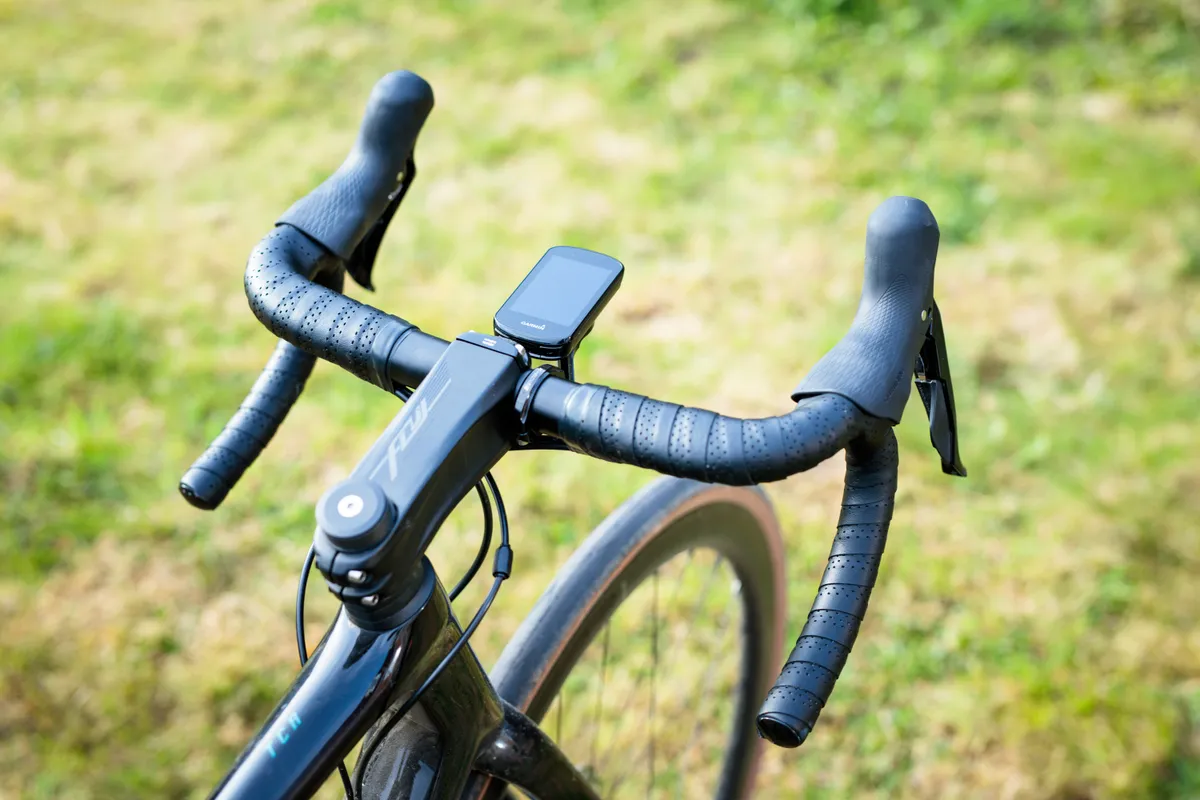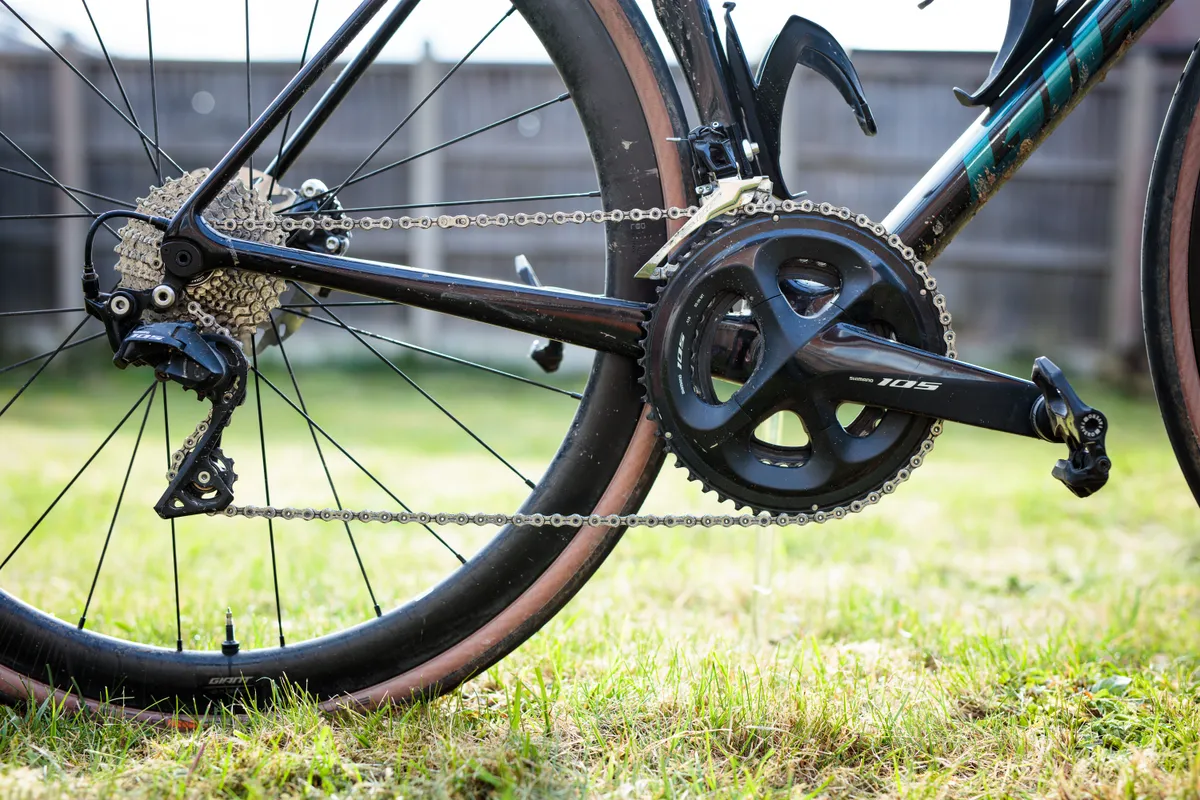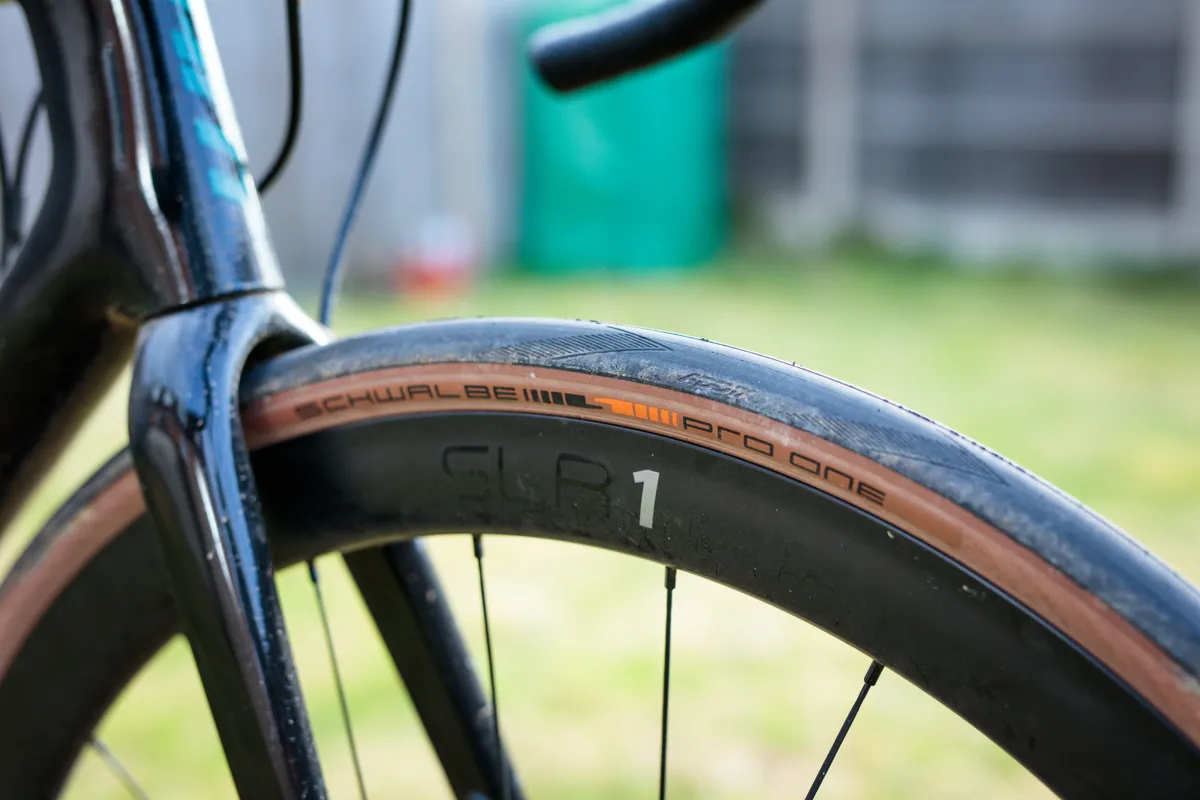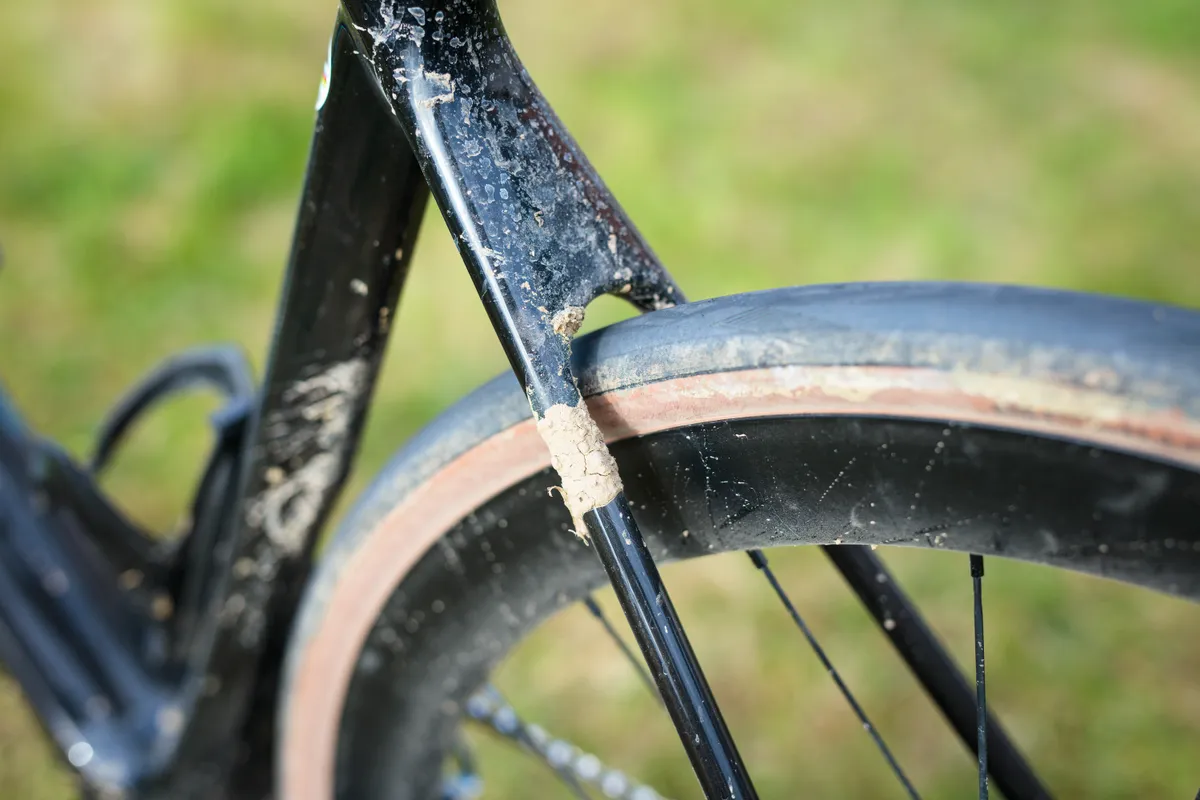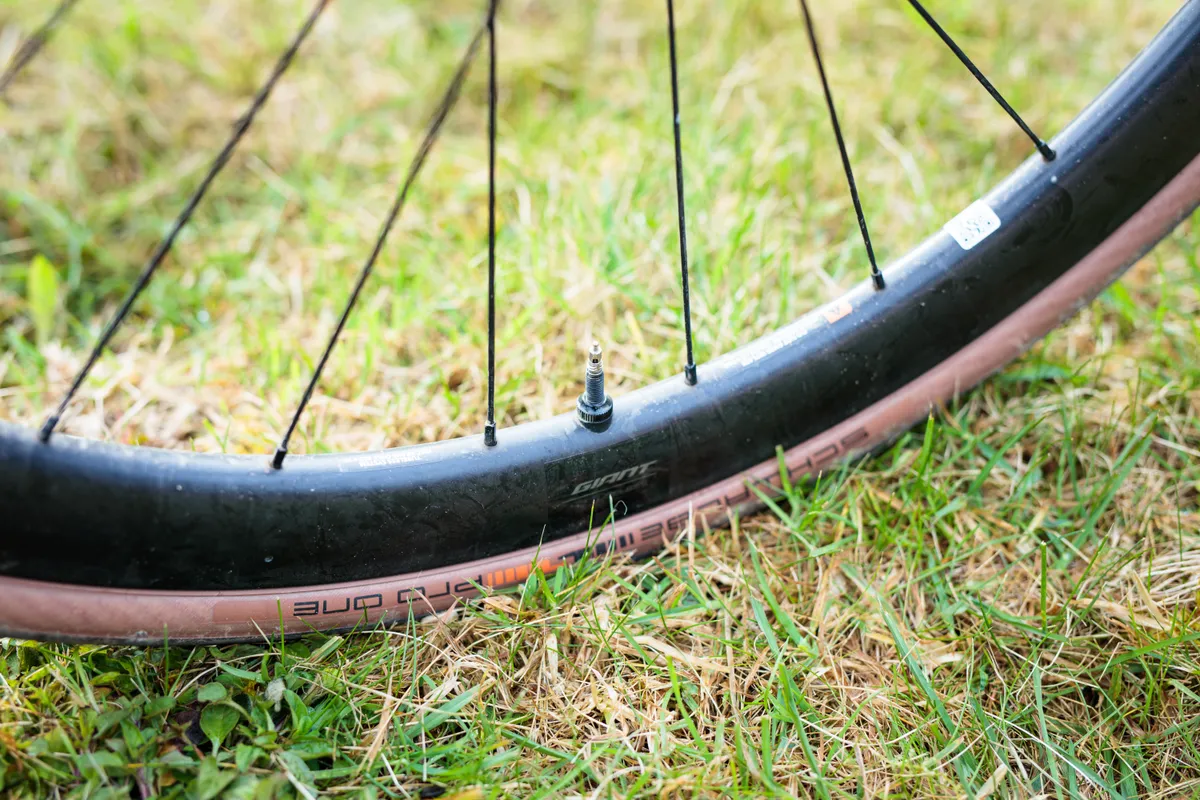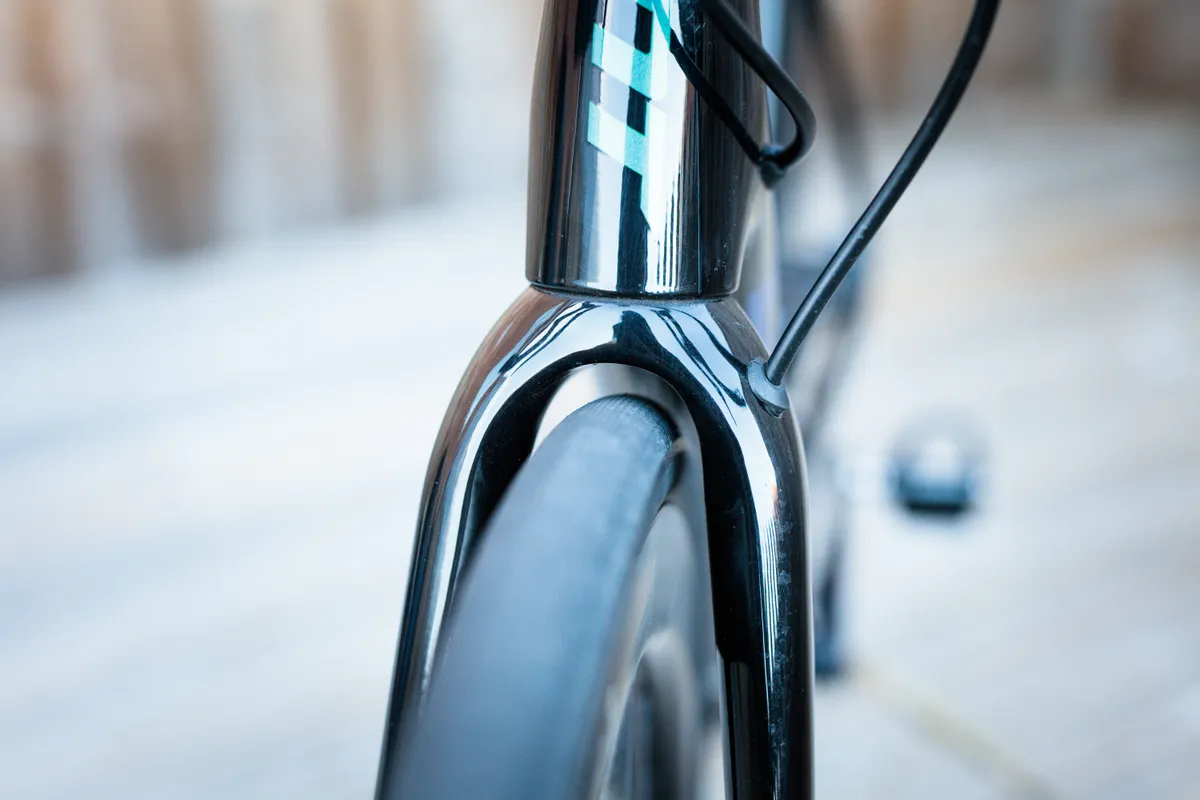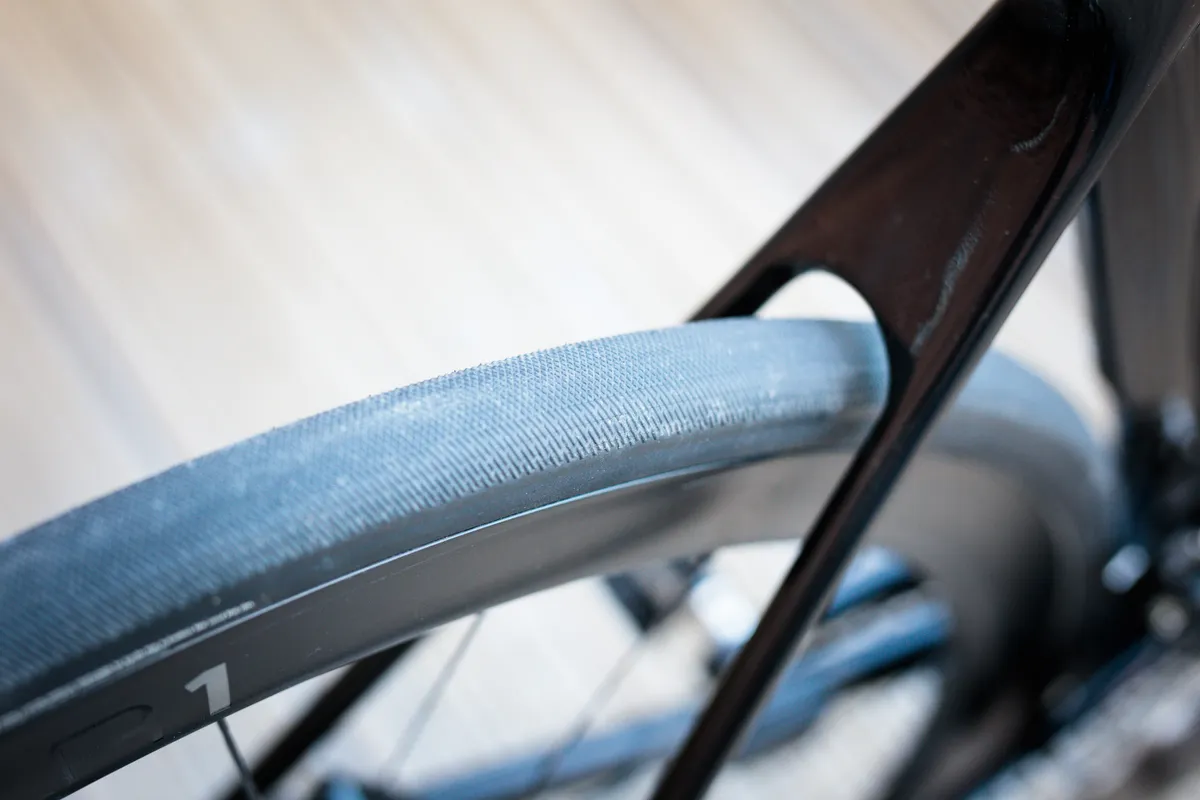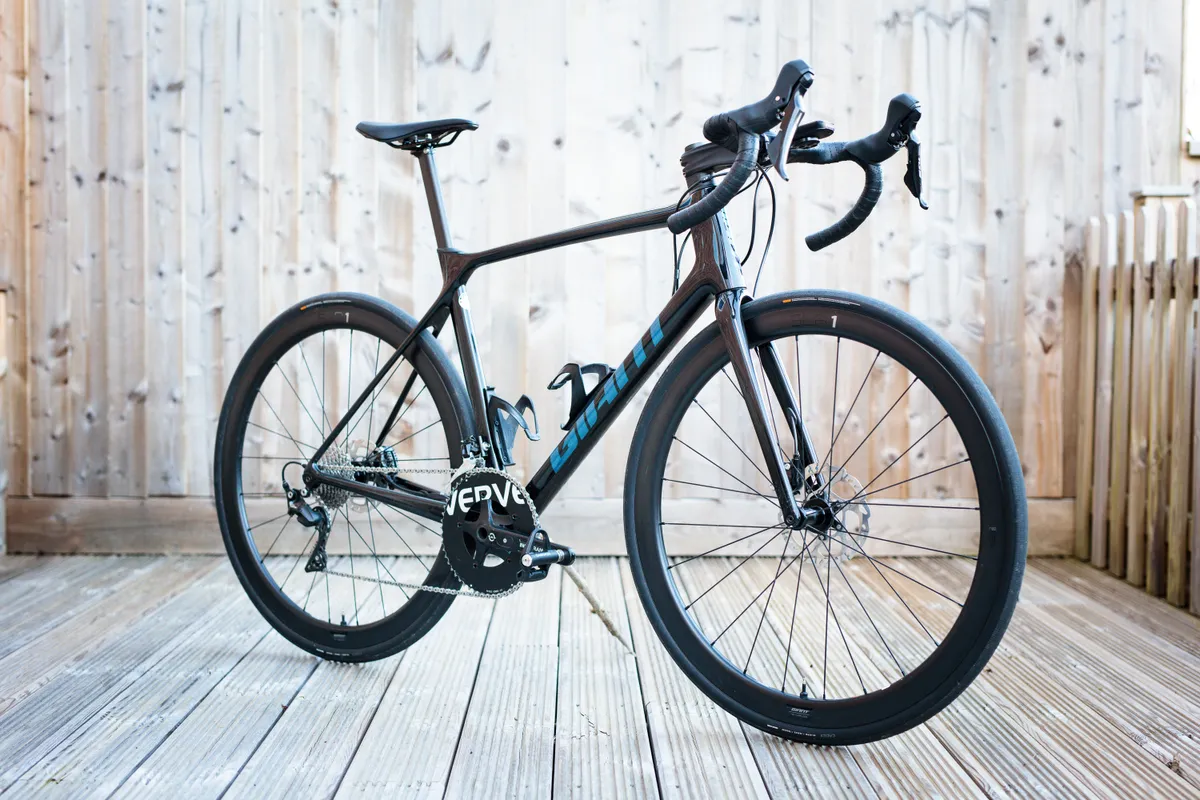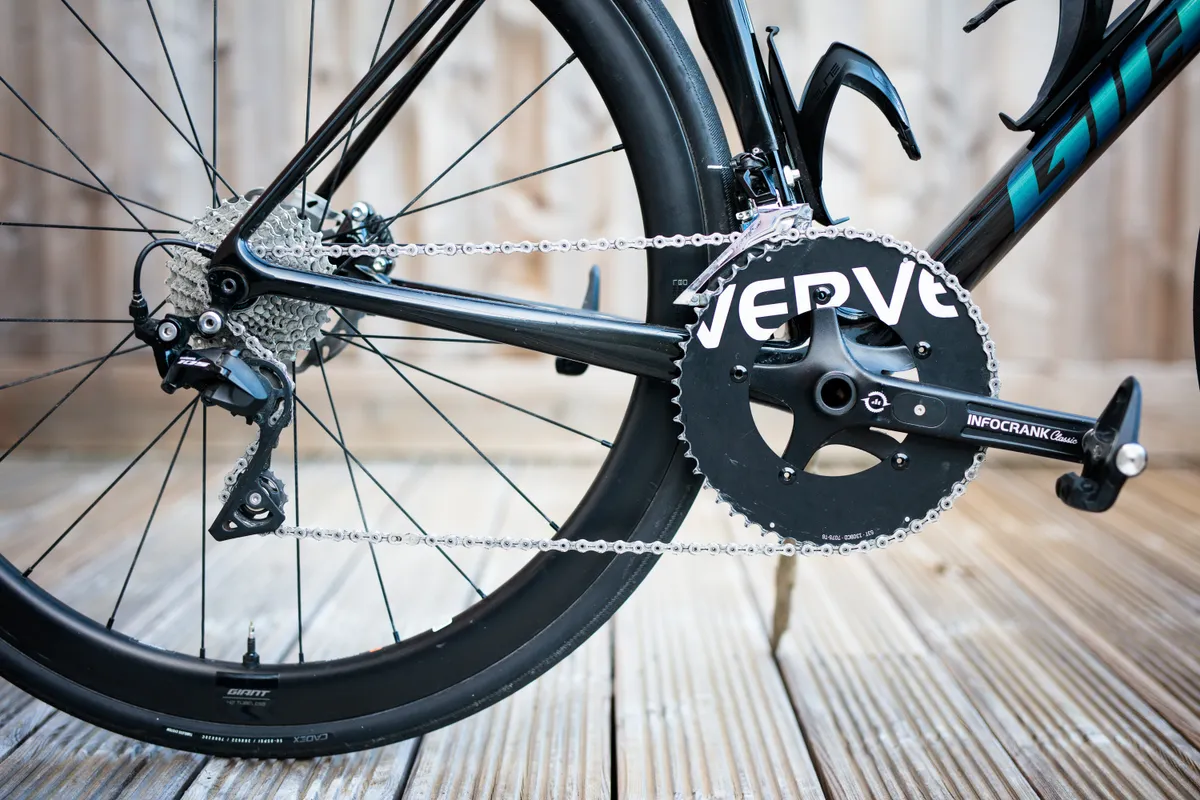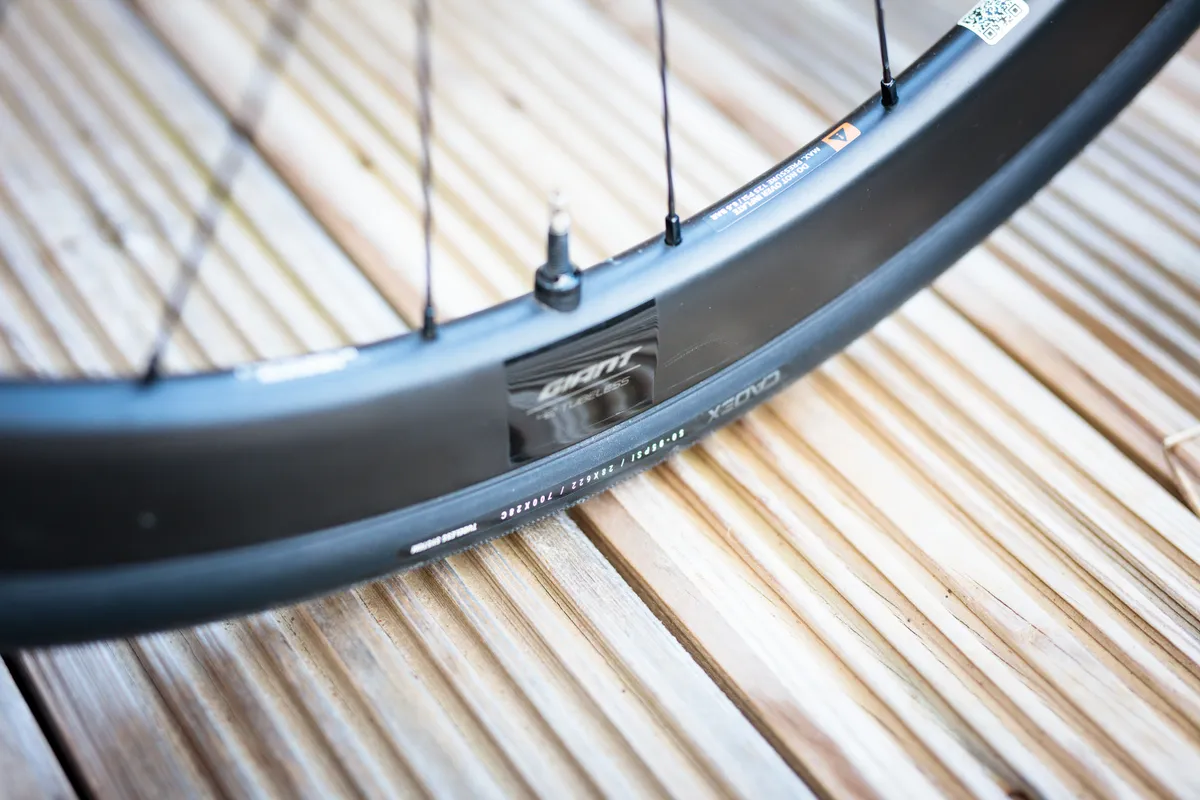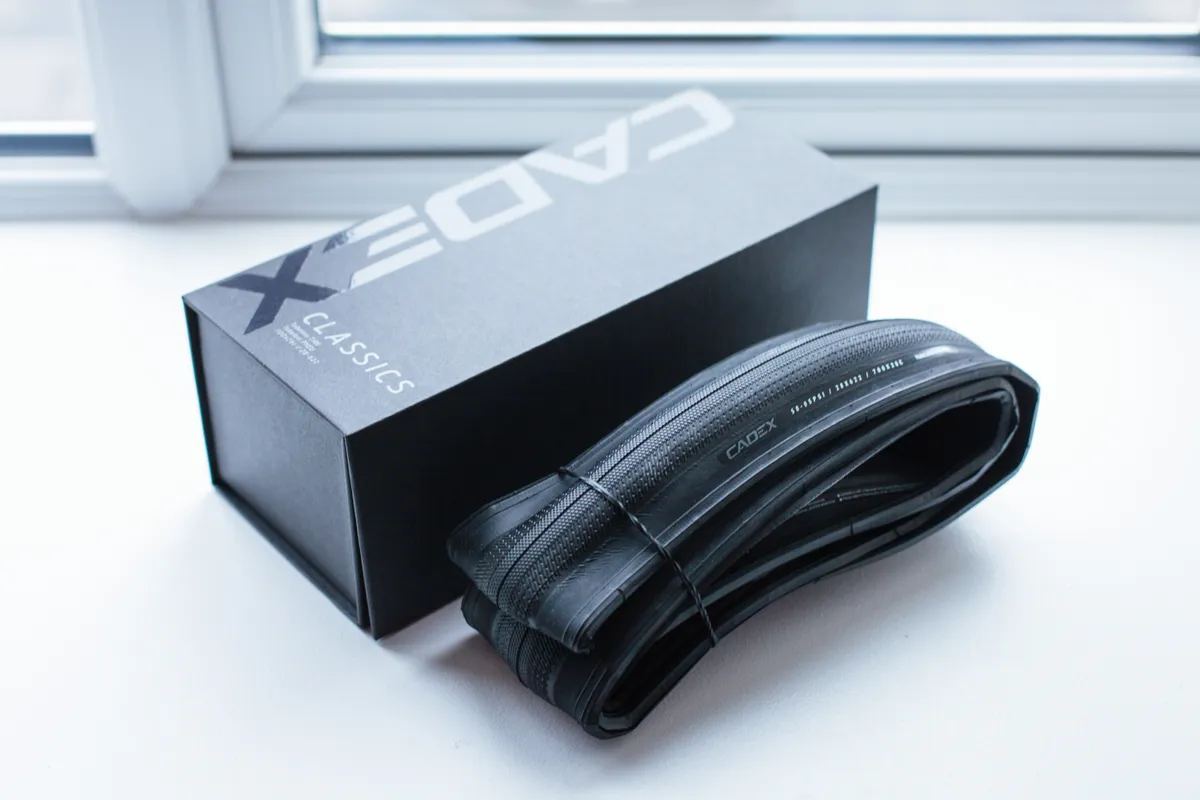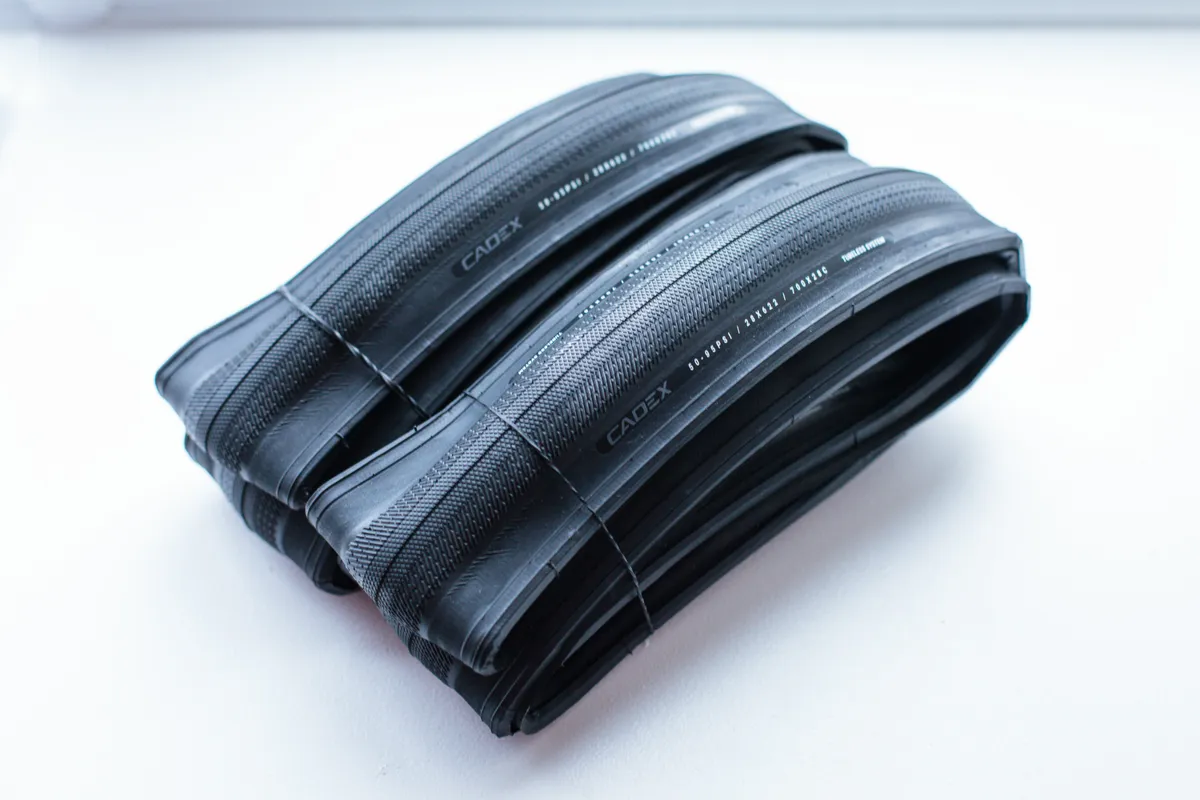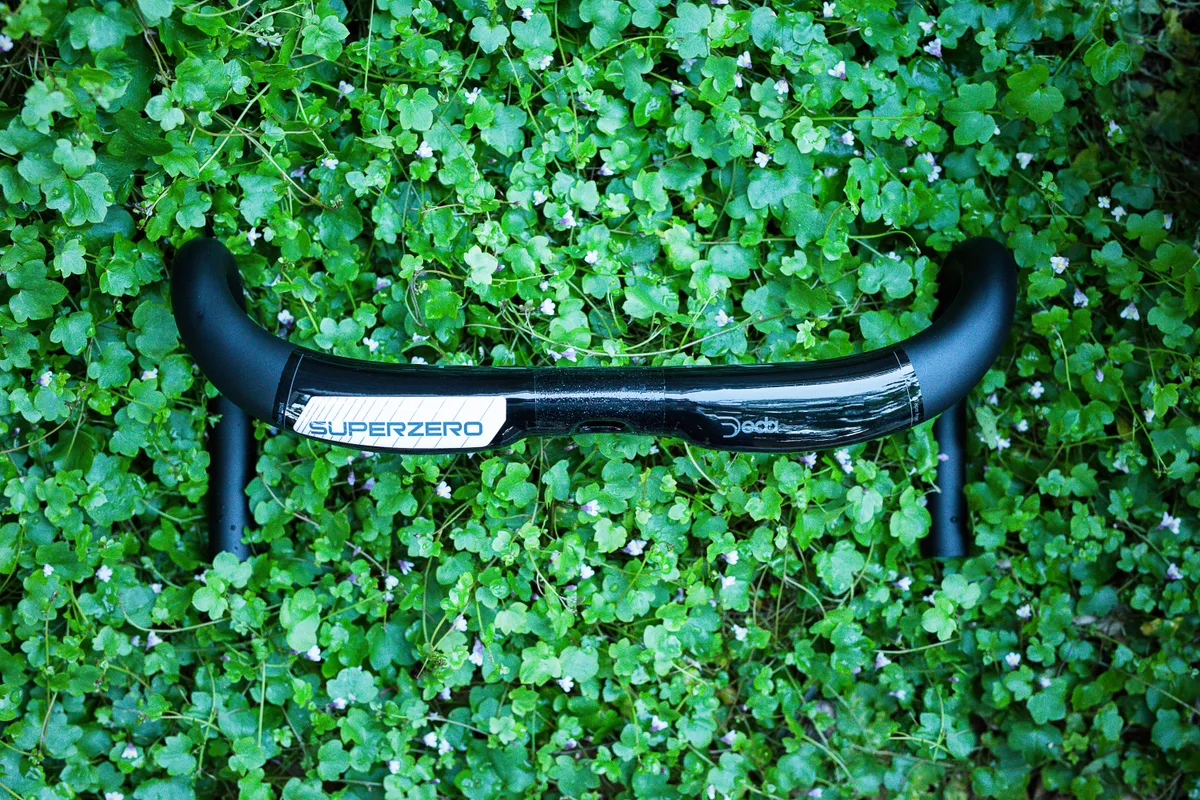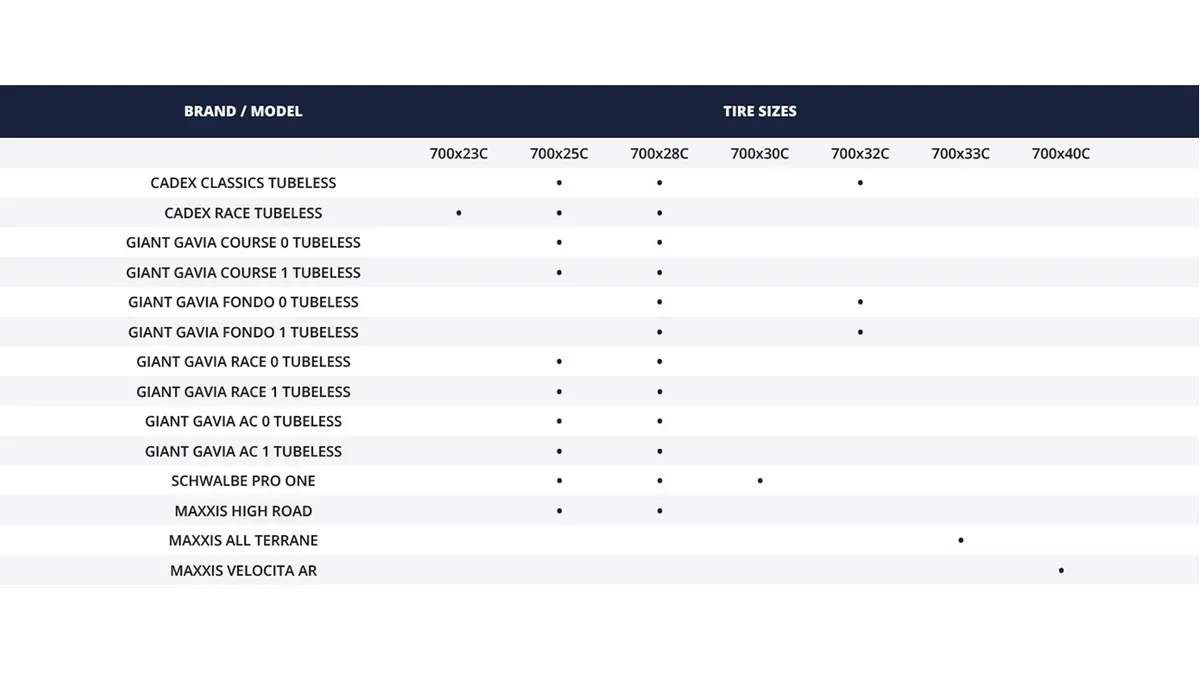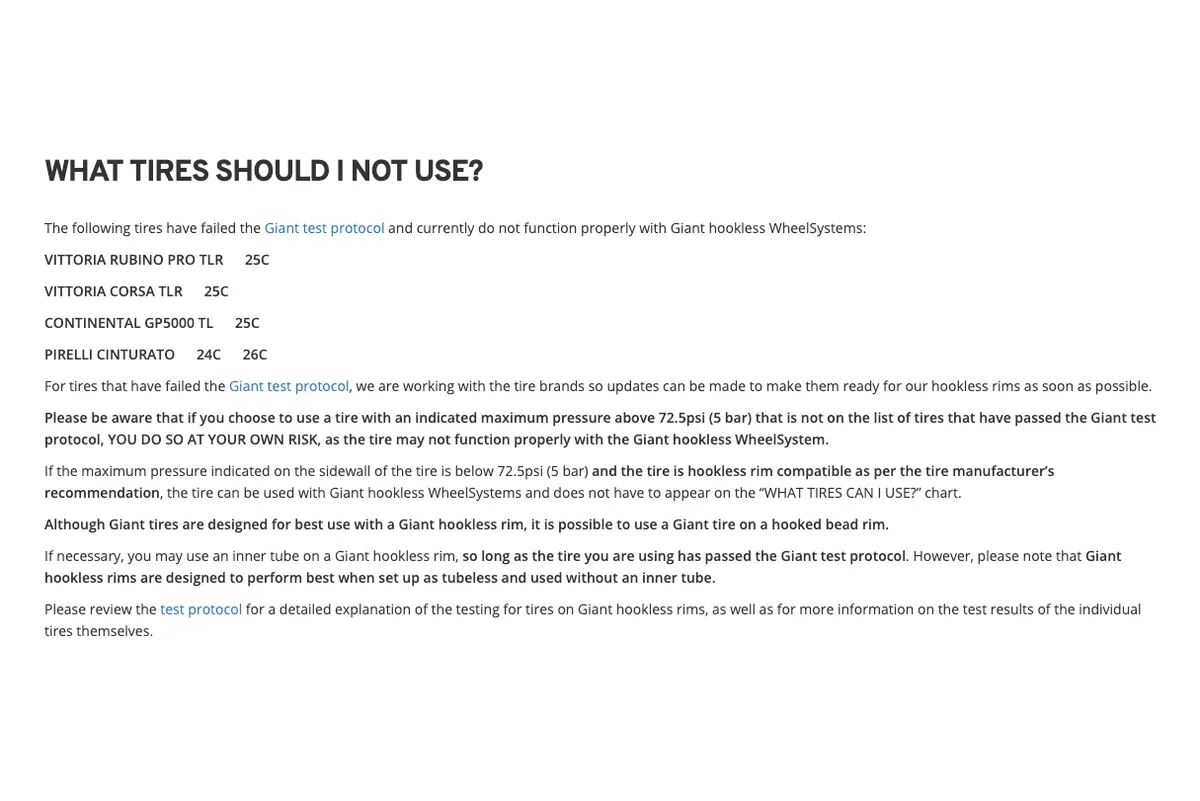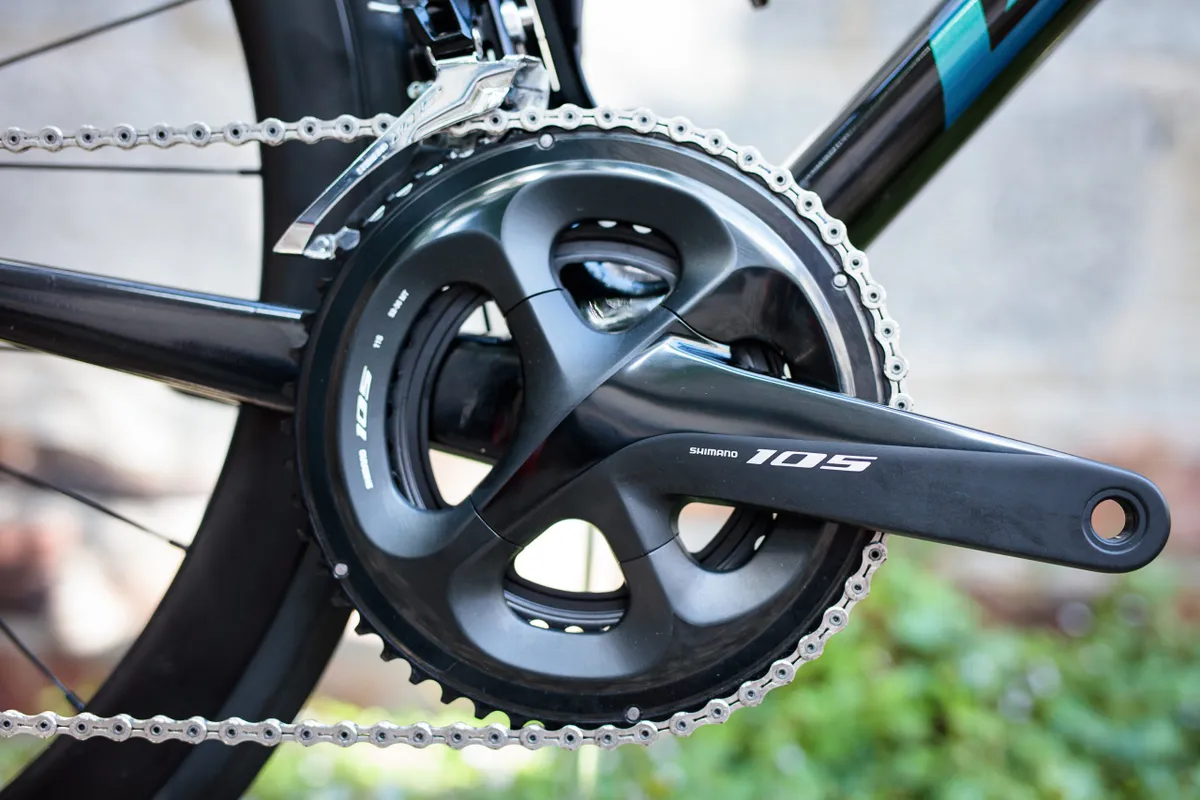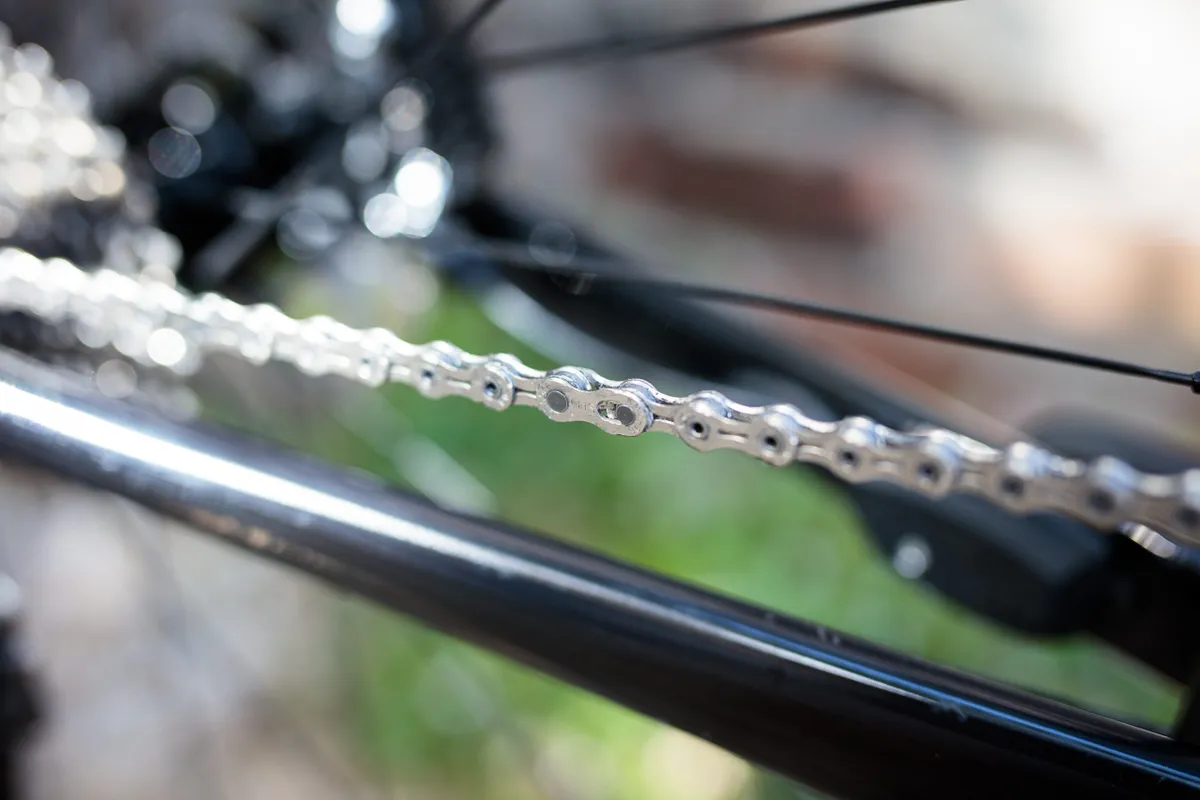The Giant TCR is one of the truly classic road bikes. The first model in the TCR series was created in 1995, the brainchild of legendary bike designer Mike Burrows, who had previously designed the Lotus 108 and 110 bikes.
Its compact frame design, borrowed from the mountain bike world, went on to influence practically every other road bike on the market today. The design was stiffer, lighter and, perhaps most crucially, cheaper to manufacture than traditional straight top-tube designs.
After it debuted at the Tour de France in 1997, ridden by the ONCE team, most other manufacturers followed suit and moved to sloping top-tube designs.
Since then, iterations of the TCR have regularly featured in our Bike of the Year tests, with a cheaper model winning the coveted award outright in 2018.
As the world of road bikes has pushed increasingly towards optimising features such as aerodynamics, it started to look as if the TCR, with its almost singular focus on its stiffness to weight ratio, was arguably being left behind.
The 2021 TCR saw a welcome change in design parameters though, with overhauled tube shapes and an increased focus on all-round efficiency.
Some of these new features appear to have been borrowed from or inspired by the Liv Langma Advanced Pro Disc, which fills a similar performance niche as the TCR for Giant's women's-specific sister brand.
At a pound under £3,500, the Advanced Pro 2 Disc model is the cheapest in the Advanced Pro Disc range, but still comes specced with fancy carbon wheels and a slew of smart component choices.
I’m hoping it’s a race-ready package out of the box, with enough practicality to let me have fun across all kinds of roads.
Giant TCR Advanced Pro 2 Disc long-term review conclusions
It’s been just over a year since Giant’s TCR Advanced Pro 2 Disc arrived for testing, and that means it's time to wrap up this epic and give you my final conclusions.
On the whole, my experience with the TCR has been very positive. As expected, it’s a fantastic all-round road bike that hits almost all of the right notes.
Though it no longer represents the absolute leading edge of road bike design, the TCR retains a wonderful balance of characteristics that make it a joy to own and ride most of the time.
Giant TCR Advanced Pro 2 Disc highs

As I’ve commented in my updates throughout this long review, the frameset is fantastic. It’s plenty stiff without being overly harsh, handles fantastically and looks great.
The exposed cables might look a little dated at first glance, but on a bike that purposefully hasn’t gone all-in on aerodynamic efficiency (if you want that, Giant has the Propel), I think the added simplicity is well worth the small drag penalty. Giant should be applauded for not just blindly following market trends.
Despite a price increase since 2020, I also think this particular model in the TCR range represents excellent value compared to the competition.
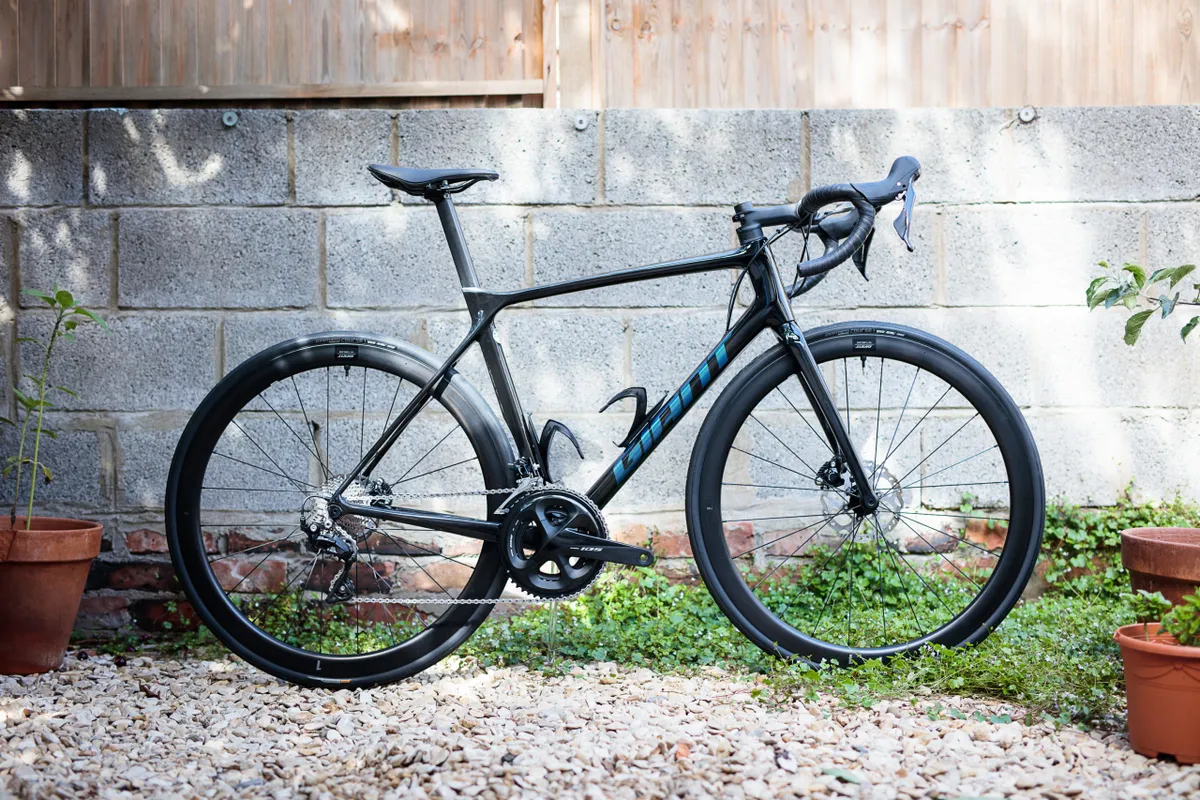
The build, with its full Shimano 105 groupset, mid-depth carbon wheels and high-quality components, is excellent. It’s a finely balanced spec and Giant deserves a lot of credit for putting it all together at this price point.
After a full year with the bike, the only component I permanently changed for pure performance reasons were the tyres (which I swapped to Cadex Classics first and then Schwalbe Pro One TLE later on). The stock Giant Gavia Course 1 tyres were fine, but a bike like this deserves lighter, racier rubber.

The relatively large tyre clearance is also great and makes the TCR an extremely versatile bike. For road racing to light gravel, there’s little it can’t turn its hand to.
Lastly, it’s been a very reliable bike. Other than the odd puncture, nothing on the TCR has broken or gone wrong, which is a testament to Giant’s manufacturing quality. If properly maintained, I’d expect this bike to last a very long time.
Giant TCR Advanced Pro 2 Disc lows
For me, the only real low point has been the hookless rims and the tyre compatibility restrictions this entails.
Despite a year now having passed, Giant’s list of compatible tyres (meaning tyres that are safe to use on Giant and Cadex hookless rims, according to Giant’s internal testing) stands at just 15 tyres, most of which are Giant or Cadex branded.
There are only five approved tyres by third-party manufacturers – three from Maxxis and two from Schwalbe. Tyres from popular brands like Continental, Vittoria and Pirelli are explicitly ruled out.
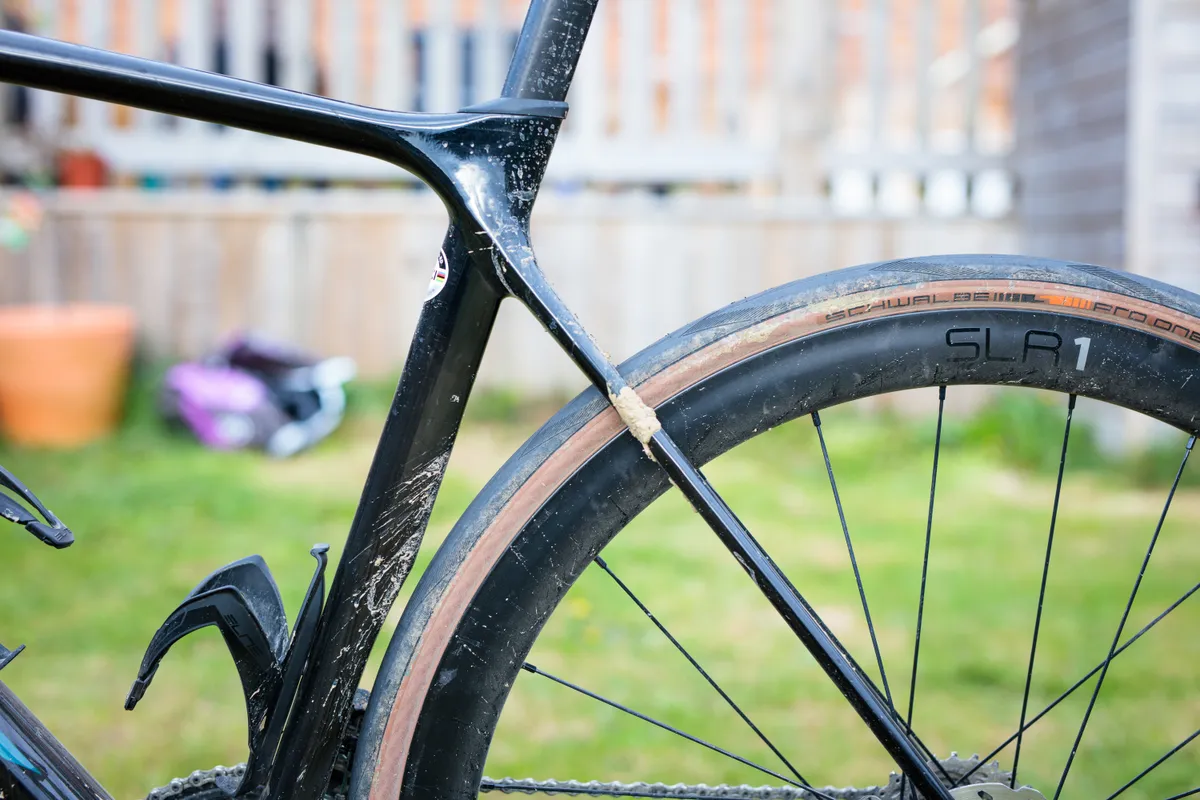
Giant continues to stress it is working with tyre manufacturers to expand this list, and it’s likely delays associated with the global pandemic are partly to blame for the lack of updates this past year, but I just can’t get past the fact that these rims still restrict tyre choice so heavily.
It’s not that there are no good options on the list – the Schwalbe Pro One TLE and Cadex Classics tyres I’ve tested this past year are both excellent options – but I’m not yet convinced the purported benefits of hookless technology outweigh the negatives, such as restricted tyre choice (I’ve gone in to why in exhaustive detail in previous updates below).
Others will doubtless feel differently (and many have told me so in the comments), but for me, it’s a dealbreaker. Given the choice between a wheelset with hooked or hookless rims for a road bike, I would currently choose hooked rims.
Giant TCR Advanced Pro 2 final verdict
For a final point of comparison I recently returned to my 2009 Giant TCR Advanced SL. While the 2009 bike still impresses, the 2021 TCR is undoubtedly far more refined, particularly in how it balances stiffness and ride quality (the 2009 TCR feels extremely rigid in comparison).
It’s a bike that hasn’t just blindly followed all of the latest trends but delivers in spades on what actually matters, on almost every front.
Would I buy it? The frameset, yes, in a heartbeat. Personally, I wouldn’t buy the wheels as things stand, though. The hookless rims just aren’t a match for this tyre nerd.
Older updates continue below.
Giant TCR Advanced Pro 2 Disc long-term review update five
One of the big selling points for this new generation TCR is the increased tyre clearance (disc brake TCRs can now accommodate tyres up to 700×32c), so I’d been keen on testing it out with some big but racy tyres.
Rapha’s ‘A Day In Hell' – a Paris-Roubaix tribute ride organised by the brand’s regional teams – provided a perfect opportunity.
Taking in an array of spooky tunnels, canal towpaths, farm tracks and gravel roads around the Bristol and Bath area, everyone else in the group turned up on a gravel bike or a cyclocross bike.
I’d fitted some 32mm Schwalbe Pro One TLE tyres to the TCR, but hadn’t made any other concessions to off-road conditions. As we rolled out, I did wonder whether I might be under-biked.
The TCR acquitted itself very well, though. It’s impressive how much versatility simply increasing tyre clearance adds to a race bike, with practically no discernible downsides.
The fact that it was dry helped, of course. Had it rained, mud and grip would have been bigger issues, especially when descending. As it was though, the bike handled the off-road secteurs with aplomb and was as good as ever on the road.
I ran the tyres tubeless, with 60ml of sealant per tyre. I did need to use a Schwalbe Tyre Booster to seat the bead (my Lezyne Alloy Floor Drive Tall track pump wasn’t enough to get it done), but the set up was otherwise pain-free.
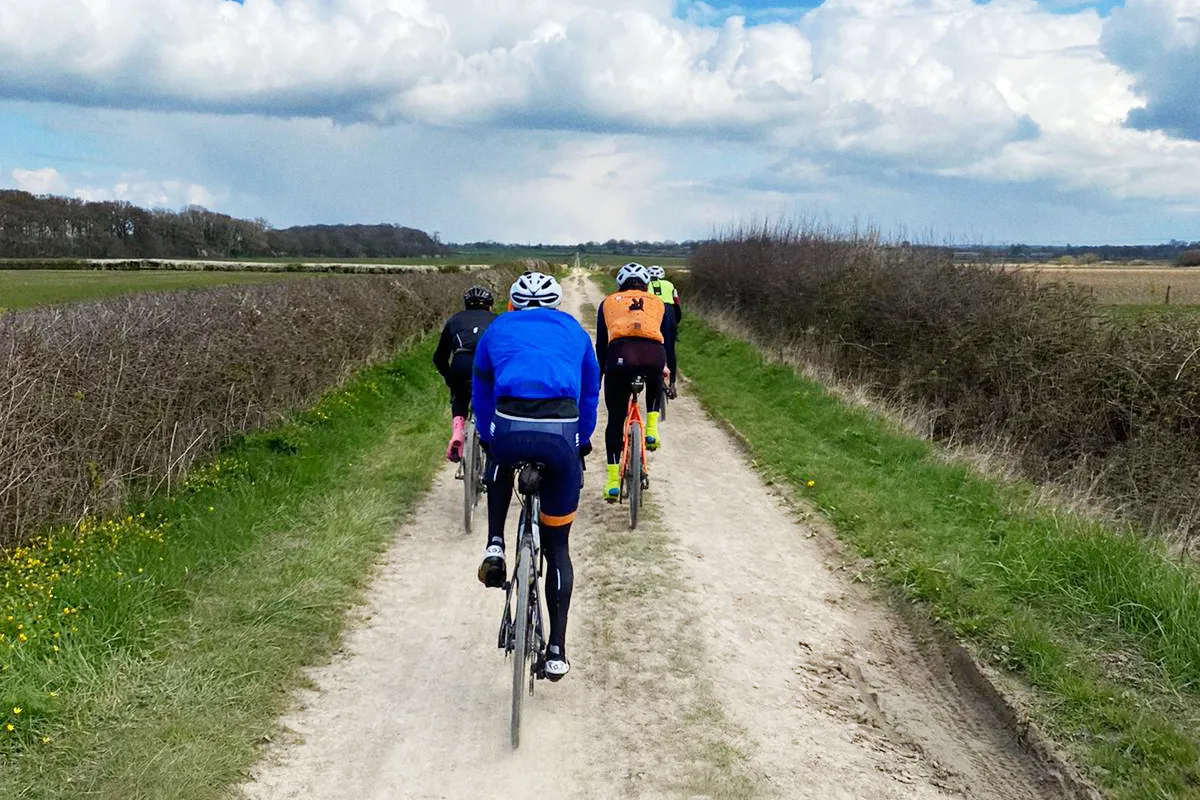
I put 53psi in the rear tyre and 50psi in the front, and the tyres measured around 31mm at those pressures. I didn’t suffer any punctures either, which had been a slight worry given the Pro One TLE is a reasonably lightweight road racing tyre.
As I’ve commented before, I do think the Giant SLR-1 rims could be wider. The 19mm internal and 24.5mm external width is fine for tyres around 25mm to 28mm, but, once you go wider, tyres start to take on more of a lightbulb shape and can feel a little squirmy at low pressures because the sidewalls aren’t as well supported.
A wider external width may also improve the aerodynamic performance too (Josh Poertner’s 'rule of 105' states the external rim width should be at least 105 per cent of the width of the tyre in order to optimise aerodynamic performance), and though it would likely entail making the rims a little heavier, I do think it would be a worthwhile trade-off overall.
So, is the TCR gravel-adjacent (as my colleague Matthew Loveridge loves to say)?
Officially, the TCR is intended for use on paved roads only, so in that sense, it’s a no. It’s a lightweight carbon road racing bike, after all, and isn’t designed to be a “rugged workhorse”.
Unofficially, though, it handles fantastically and can certainly be used on light gravel, farm tracks and the like, especially if it’s dry.
Being so stiff, it’s not an especially comfortable ride off-road. You also need to pick your lines carefully and avoid big holes. I would definitely do a similar ride on the TCR again in the future, though.

Giant TCR Advanced Pro 2 Disc long-term review update four
As I mentioned in my last update, I’d been excited to finally try the TCR out with some faster, wider tyres. For those of you who’ve been following this review, you’ll know the rims and tyres (or, more specifically, the compatibility limitations) have been a sticking point for me.
Installing the Cadex Classics tubeless tyres was very easy. They went on the rims without needing tyre levers, and, with the valve core removed and a bit of soapy water applied to the beads and rims, I was able to seat the beads straight away using a standard track pump.
Inflated to around 60psi, the tyres measure just under 29mm wide, and out on the road they feel fantastic. Though I can't quantify it, there was an immediate sensation of lower rolling resistance compared to the stock Giant tyres, especially on poor quality roads. They have that distinct hum that a high-quality, racy tyre often has too. It’s been quite transformative, actually.
This isn’t too surprising because the Cadex tyres have a much more supple casing and are, despite their increased size, 104g lighter for the pair than the Giant tyres (lighter tyres tend to exhibit less rolling resistance because there’s simply less material to deform).
For a relatively small cash outlay, I think they make a big difference to the performance and ride quality of the bike.
Value
Another thing I touched on in my last update was the price of the bike rising to £3,499 / €3,350. Now that the dust is starting to settle on other 2021 prices in the cycling world, I don’t think it makes much, if any, difference to the value of the bike. Sadly, paying a bit more for bikes and parts looks like the new normal, at least for the time being.
I still think this bike represents very good value, though, all things considered. Plus, I’ll reiterate what I said at the beginning of this almost Homeric epic, about it being a smart move on Giant’s part to spec a Shimano 105 groupset and high-quality wheels at this price point. Cheap wheels and tyres are so often the weak point for race bikes, and Giant has got the balance right here.
Where next?
With spring firmly in the air, and lockdown rules relaxing, I'm most looking forward to riding with friends again, hopefully on warm, sunny days.
Although it’s looking likely Paris-Roubaix will be cancelled or postponed again this year, Rapha is hosting one of its ‘A Day In Hell’ rides around Bristol in early April, and I’m hoping I can persuade a few friends and colleagues to join me in taking on this tribute to the Queen of the Classics.
The TCR isn’t an endurance bike by any measure, but given it now has 32mm tyre clearance I’m eager to see how it performs on some truly rough stuff.
Giant TCR Advanced Pro 2 Disc long-term review update three
It’s a reflection of the current state of the world (or at least the UK, anyway) that I sadly haven’t been riding this bike outside much recently.
A sudden constriction of free time caused by the recent arrival of my first child has played its part, but the bigger issues of another national lockdown and the treacherous winter conditions, have largely confined me and the TCR to the smart trainer these past couple of months.
I’m training four or five times per week at the moment, in short bursts, but I’ve only been out on the bike maybe three or four times since my boy arrived in December.
While the old adage, “there’s no such thing as bad weather, only unsuitable clothing” is fine for fellwalkers and Highlanders (it was apparently Alfred Wainwright, the famous fellwalker and writer, who first wrote those immortal words in his book, A Coast to Coast Walk), icy road conditions can be quite dangerous for cyclists, and I prefer not to take my chances when temperatures are hovering around zero degrees.
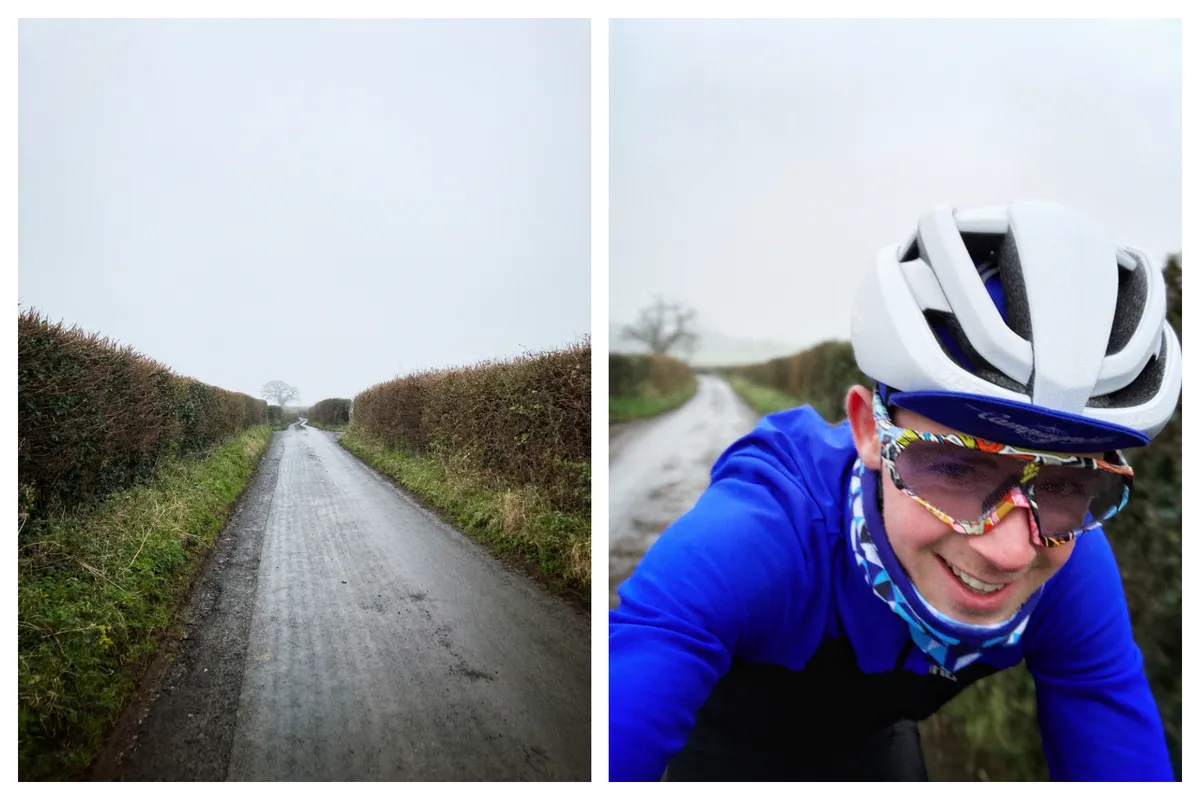
It’s obviously impossible to assess the performance of a bike when it’s attached to an indoor trainer, but it is great for testing saddles because the increased heat and sweat generated by cycling indoors can amplify the effects of any issues.
Fortunately, though, my appreciation for the stock Giant Fleet SL saddle has only increased during this period, as proven by its inclusion in my Gear of the Year 2020.
I’ve long been a convert to the benefits of indoor training, though. It’s a time-efficient way of getting fit, and with the availability of apps such as Zwift (other indoor cycling apps are available), it’s not impossible to make it fun too.
In fact, it’s worked so well that I recently got close to my best 20 minute average power for the past year, during stage two of the Tour de Zwift, on the Innsbruck KOM. It’s amazing how much motivation a virtual group ride can elicit.
That’s great in one sense because who doesn’t like being in good shape, but it also has its drawbacks. First of all, it inevitably meant updating my FTP setting, and in one fell swoop all my future workouts got quite a bit harder.
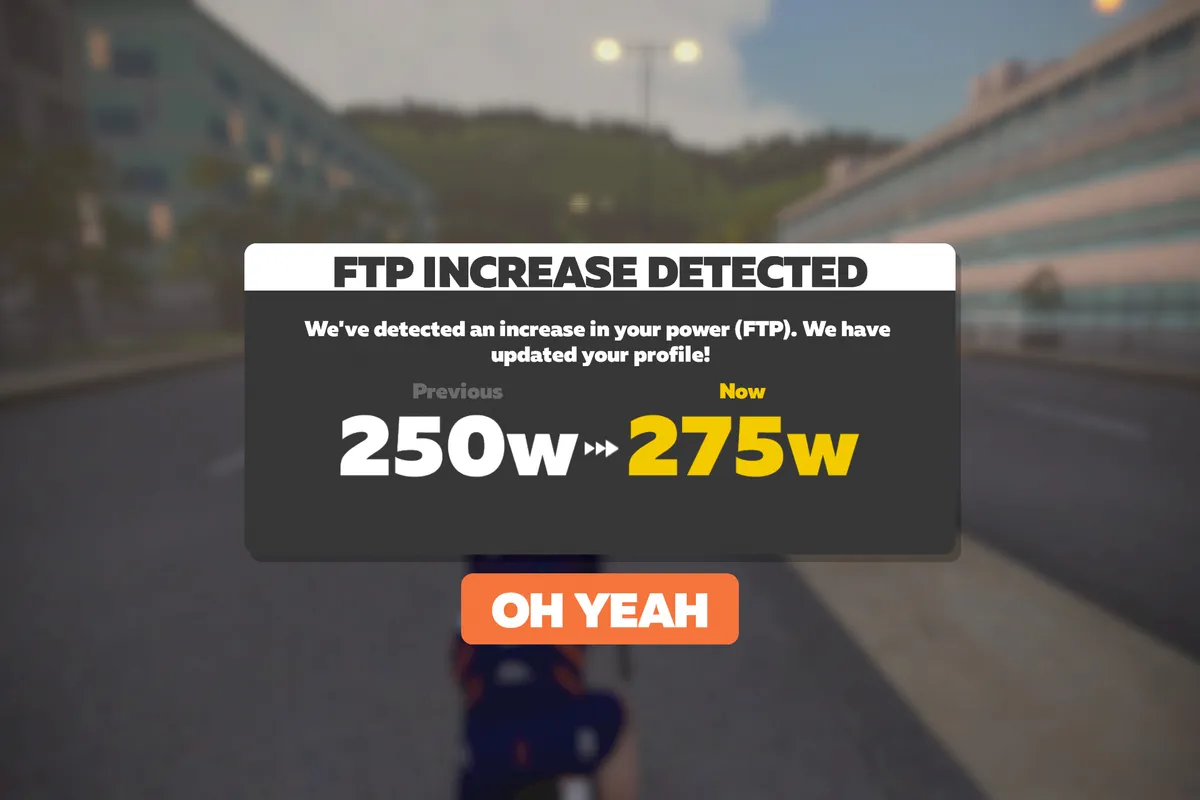
I’ll also admit to being concerned about whether going so well in January is actually a good thing – can I expect to keep improving at this rate into the spring and summer, when real life racing will (hopefully) resume, or am I setting myself up for a quick plateau and eventual decline?
Hopefully it’s the former and I’m just doing things right. I’m still some way off my all-time best numbers (as an aside, this is the major problem with power meters; once you’re past your prime they mostly just track how much grunt you’ve lost – at least heart rate monitors are kind enough to inform you whether you’re still trying as hard), but I think it’s worth me keeping a beady eye on how much intensity I’m incorporating into my training, and making sure I’m building my aerobic capacity slowly and sustainably.
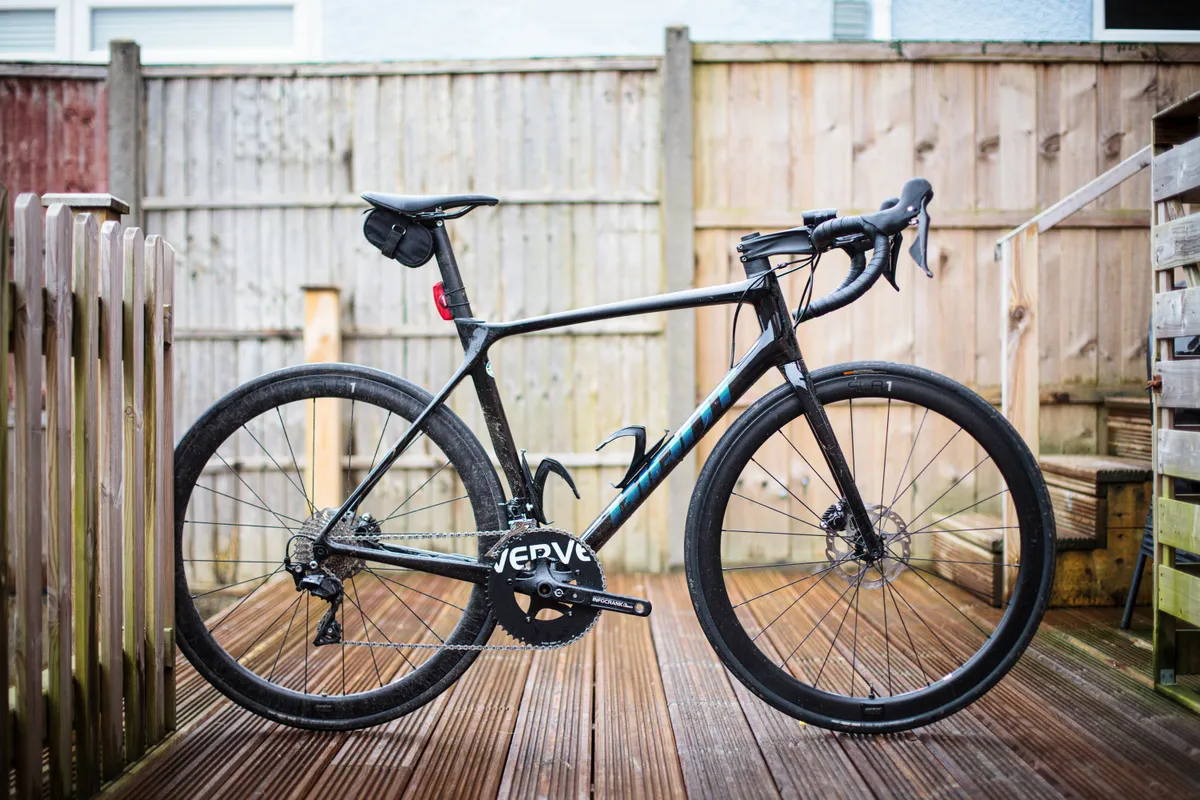
Price changes
One thing that has changed in the interim is the price. Sadly, the TCR Advanced Pro 2 Disc now costs £3,499 in the UK, £300 more than it did previously. Giant's product manager, David Ward, told me this was due to "rising costs of raw materials and components, as well as new import duties that affect bikes being imported into the UK from the EU" (Giant has its European production and distribution centres in the Netherlands).
The news is consequently slightly rosier if you live in the EU, where the price is now €3,350.
It’s hard to say at this point whether this change affects how good value the bike is. My initial reaction is that it doesn't, as many bike brands are, for various complicated reasons, currently raising their prices by significant amounts across the board. I'll revisit this in a later update though, once prices across the industry have settled.
Cadex Classics tubeless tyres
I was fortunate enough to receive a set of the Cadex Classics tubeless tyres in a 700 x 28c size, mentioned previously. Weighing in at an average of 333g per tyre on my scales, they’re around 18g heavier than the 315g claimed weight, but in the grand scheme of things I’m not going to lose any sleep over 30 grams or so.
What I’m most interested in is how easy they are to install on the SLR-1 hookless rims, and what the ride quality is like. They certainly look and feel the part in the hand. Stay tuned for the next update.
Giant TCR Advanced Pro 2 Disc long-term review update two
It’s not been long since my last update to this review, and I’ve actually spent much of that time riding other bikes. That’s been quite useful though, because it’s provided plenty of opportunities to compare this bike to its peers.
The most notable of those is probably the new 2021 Canyon Aeroad. I’m not going to compare them directly because they fill different niches, but it’s interesting to note that what was arguably once the most progressive bicycle in the peloton – the TCR’s compact frame design revolutionised road bike design when the first iteration launched back in 1997 – now represents more ‘traditional’ road bike design.
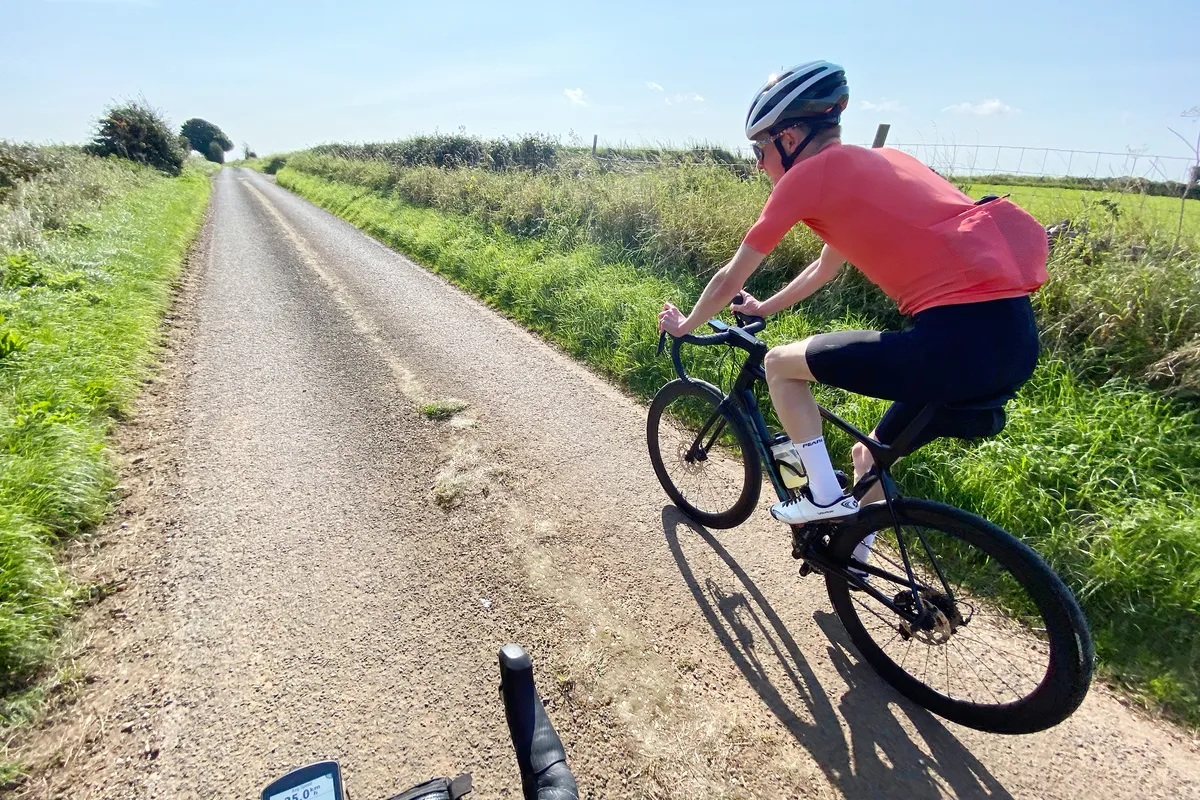
That’s not necessarily a bad thing. In a head-to-head race situation, bikes such as the Aeroad, or Giant’s own Propel aero bike, would almost always be quicker. But extra speed tends to be gained through the use of proprietary parts and compromises in user serviceability.
Fully integrated cable routing, for example, is great for cutting drag. Canyon reckons it can save “up to 3 watts in extreme cases”. Nice to have when you’ve spent months and years training to pull every last drop of horsepower from your engine, and it does make a bike look great too. I also firmly believe riding fast bikes is fantastic fun.
On the other hand, needing to disconnect every cable on the bike in order to replace parts like headset bearings or handlebars isn’t very entertaining.
Of course, those aren’t things that need to be done regularly, and you can always drop the bike off with your friendly local mechanic, who will no doubt be thrilled to take on the challenge. But, still, as we’ve seen with the recent launch of the Specialized Aethos, there’s an enduring appetite for simplicity in road bikes too.

After all, even worshippers at the Holy Church of Aerodynamics (like myself) have to admit that not everyone races, or cares about riding as fast as possible, but it’s an odd quirk of fate that the TCR has come to fill that niche.
With the clocks going back and officially signalling the end of British Summer Time, winter is well and truly on its way. That means an eventual return to base training and, inevitably, more time on the indoor trainer.
As for the TCR, I’d still like to swap the tyres out for something different, just to see how it affects the bike’s performance. Given the changing seasons and what the worsening weather will do to the roads, something more voluminous could be on the cards.
Cadex has recently released a Classics tubeless tyre, which comes in a 32mm size (which is the maximum tyre size the TCR can now accommodate). Being part of the Giant/Cadex family, it’s fully compatible with the wheels (something I've covered in detail in an earlier update; see below) and promises a mixture of speed, grip and puncture resistance suitable for rough roads.
Hopefully, I can get my hands on a set and see how the TCR stands up to winter riding.
Giant TCR Advanced Pro 2 Disc long-term review update one
With lockdown restrictions easing and a glorious period of warm, sunny weather after my initial review was published, I've had plenty of time to get out and ride this bike (in between racing my time-trial bike).
My initial impressions of it still largely stand true. The new TCR is an extremely competent road bike. It climbs well, ticks along on the flat, and descends without any fuss.
I’ve been using this bike for cheery jaunts with friends, fast group rides, solo training rides and I’ve even taken it on a tiny amount of gravel. It handles practically everything you can reasonably throw at it with aplomb.
My only notable reservation is around the wheels, and their current lack of tyre compatibility with third-party options (more on this later).

Ch-ch-ch-ch-changes
As I mentioned in my initial review one of the very first things I knew I wanted to change was the fit.
That meant a slightly longer stem and a narrower, deeper handlebar.
The handlebar is an updated version of Deda's Surperzero handlebar we reviewed in 2017. The good news is the 40cm version is nice and narrow (it’s around 37cm at the hoods), it looks very smart and, if paired with a Deda DCR stem, it’s also possible to run both gear and brake cables fully internally, if that’s an option on your bike.
The bad news is the majority of the marked bar clamping area is too large in diameter for the brake levers to fit properly.
Unless you like a very low hood angle, you have to run the shifters right at the bottom of the clamping area and tilt the whole handlebar up to get your preferred hood angle. This affects the angle and reach of the drops too, as well as the orientation of the aerofoil top section.
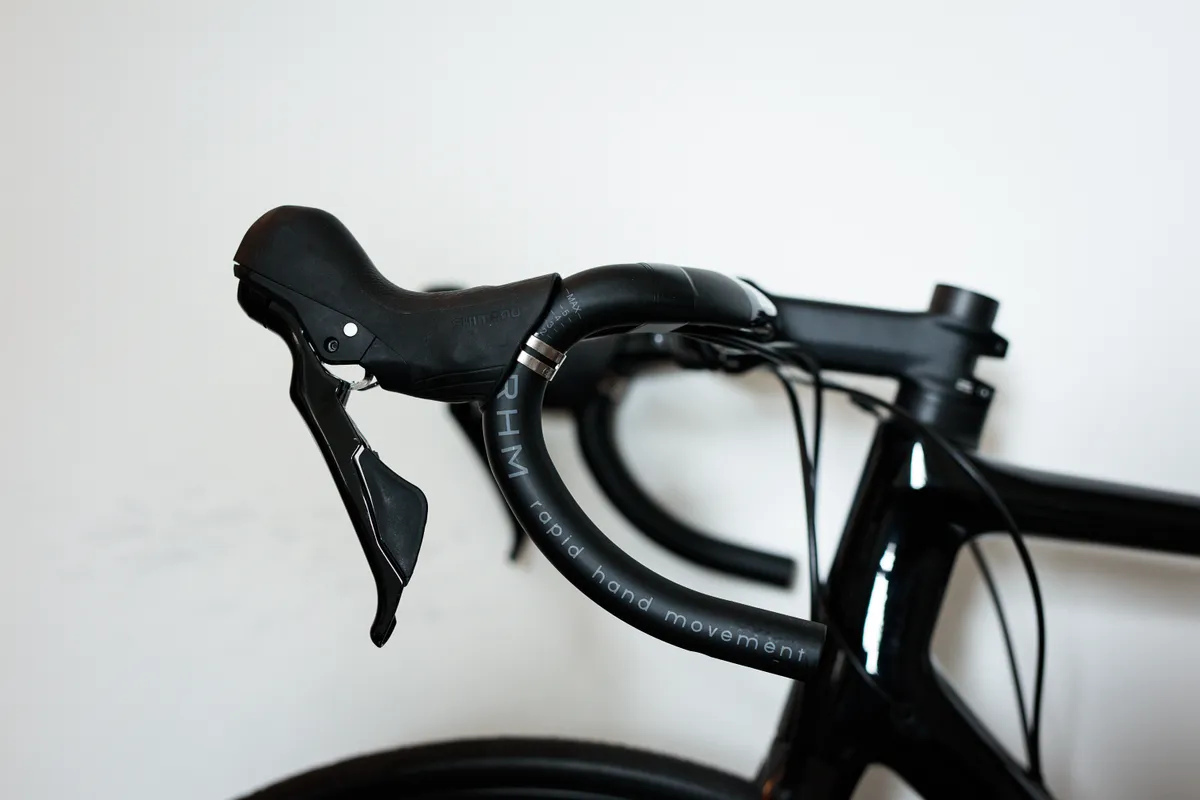
A Google search throws up a number of people complaining about the same problem, so, disappointingly, I don’t believe this is an isolated issue.
Giant hadn’t yet taken delivery of spare stems for the 2021 TCRs, so I took the opportunity to try something slightly different – the Giant Contact SLR Flux OD2 stem (RRP £219.99).
It’s a stout, oversized hunk of hollow carbon fibre. The kind of thing you sometimes see on sprinters' bikes.
Originally developed in conjunction with the Liv Langma, the women’s-specific equivalent of Giant’s TCR (which, incidentally, went aero long before the TCR did), it nevertheless matches nicely with the new TCR.
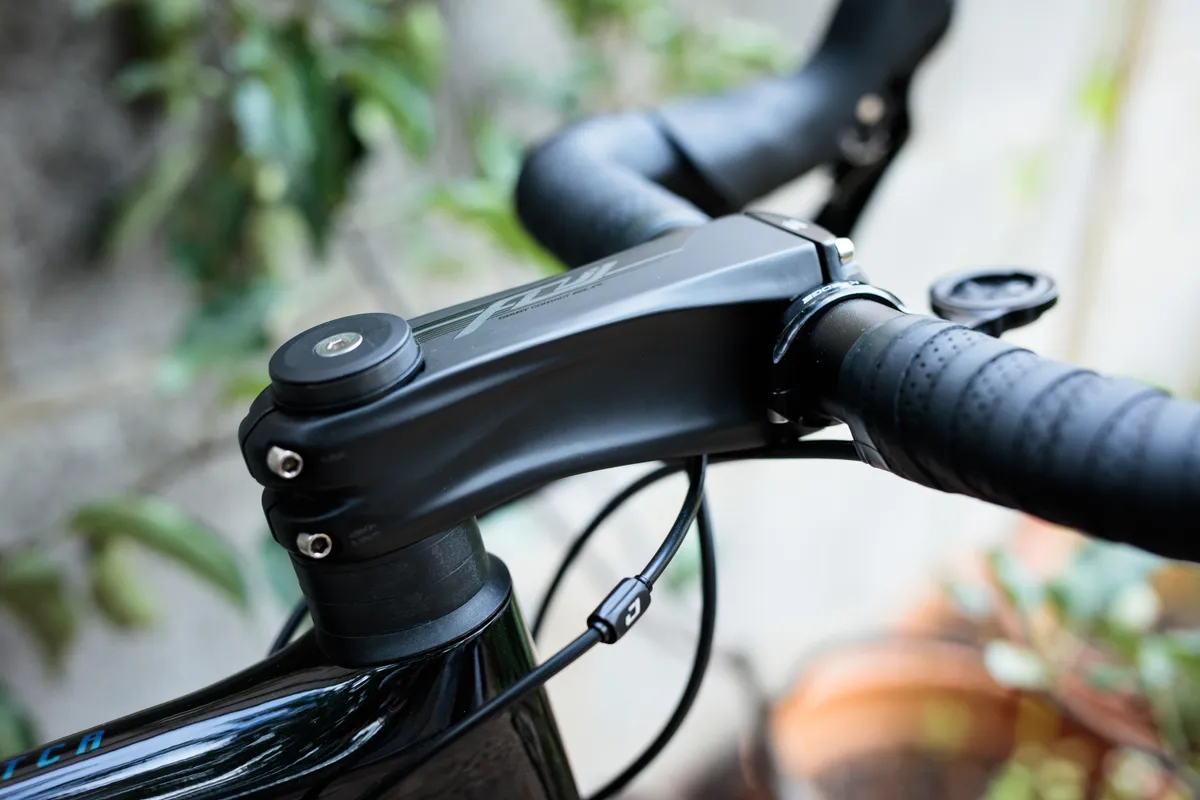
Somewhat surprisingly, it does make a noticeable difference to the TCR’s front-end stiffness. This translates into improved handling, even for a whippet like myself. I think it also looks very cool.
Is this stem going to make you faster while riding along in a straight line? No. But it does make the bike feel detectably more direct when sprinting or when going through fast, sweeping corners, and that can make you feel more confident in pushing the bike’s limits.
Whether those differences are worth the £170 premium versus the standard alloy stem is a harder question to answer, but that will ultimately be a personal decision.
Tyre compatibility limitations
One thing I haven’t yet changed are the tyres. As previously discussed, the 2021 Giant and Cadex carbon wheels are based around a new hookless rim design.
At the time of the initial release, tyre compatibility was strictly limited to a selection of Giant and Cadex tyres, in certain sizes, that had been stringently tested for safety. Giant did say that testing with other brands of tyres was ongoing though, and that an updated list would be released in due course.
Unfortunately, at the time of writing, the situation remains largely unchanged.
Giant recently announced that five new tyres had been added to its approved list, but that only brings the total number of approved road tyres to 12, and the Continental GP5000 TL – which many (including myself) consider to be one of the best road racing tyres currently available – has been explicitly ruled out.
Sadly, Giant doesn’t have rolling resistance data available for its own range of tyres, so it’s hard to objectively compare them to third-party options and get an idea of whether you’re losing or gaining something (in performance terms) by using Giant or Cadex tyres.
Given this, it looks like the best choice for racing might be Schwalbe’s Pro One TLE, which Giant has approved for use on its hookless rims. If only Schwalbe would finally release the tan wall version in the UK, I could sleep soundly.
To its credit, Giant has said it is working with tyre brands to test as many tyres as possible going forward, and that it will also help them design future tyres to be fully compatible with these rims.
As we’ve commented elsewhere though, it appears that some wheel manufacturers (including Giant in this instance) have raced ahead of tyre manufacturers, perhaps forgetting that the two are integral to each other.
The obvious problem is that tyres are a consumable item, whether simply through wear or damage, so you will have to replace them eventually. Such limited compatibility limits your options considerably whenever that time comes.
It could also be a real issue if you need an urgent replacement and your local shop doesn’t hold stock of approved tyres either, or if you find yourself needing a new tyre in the middle of a ride (as has happened to me before). You might not have much luck looking for a compatible tyre in a small independent bicycle shop at the foot of a French Col, for example.
Supply of compatible tyres isn’t limited online (however, Giant and Cadex tyres aren’t available from all major retailers, such as Wiggle, Chain Reaction Cycles and Evans), so you could stock up on spares and carry them with you to avoid such a situation, but that’s quite an inconvenience.

It’s also worth noting that there are no other wheels currently on the market with such limited compatibility.
Giant told us it feels it has been more stringent in its safety testing than other wheel brands, but either way, it has designed a wheelset that doesn’t offer compatibility with the vast majority of tyres currently on the market, and that’s a serious limitation.
And that’s all before we consider that tyres are one of the most important components on any bike in determining performance. As we’re always saying, better tyres are one of the cheapest, easiest and best ways to upgrade your bike.
This is because the difference between an average tyre and the best on the market (in terms of rolling resistance and grip) can be substantial. And that difference certainly seems to be far greater than the performance difference between hooked and hookless rims, which then begs the question; is it currently worth it?
Is a solution in sight?
At some point in the future, when standardised hookless rims and tubeless tyres become the norm for performance oriented road and gravel wheels, this issue will likely be solved. But there isn’t a timeline for this, so if you’re buying now it’s impossible to know how long you might have to wait for it all to be sorted out.
Many are pointing to apparently incoming new ETRTO and ISO standards for road tubeless, but as we’ve seen with bottom brackets over the past decade or so, manufacturers love to create new ‘standards’ at the merest hint of a potential performance gain, so it might not be the panacea we’re all hoping for.

As you might be able to infer then, I’m not convinced the marginal benefits of this particular rim design currently outweigh the downsides of such significantly reduced tyre choice.
It’s an evolving situation and I’ll happily revise my opinion on it when things change, but that’s where I currently stand.
Consumers also need to be aware that this is not just a performance issue, but also one of safety. Giant is explicitly saying that tyres not on its approved list are unsafe to use on its hookless road rims.
This is not something you want to experiment with, and I’d also question if this is something consumers and bike shops will be sufficiently aware of to prevent the use of unsafe wheel and tyre combinations.
I’ll caveat all of this by stressing there is nothing particularly wrong with the stock Giant Gavia Course 1 tyres – they seem like fine training tyres.
They feel okay on the road, but they’re not competitive in terms of weight (Giant quotes 375g per tyre, which is around 110g heavier per tyre than a 28mm Schwalbe Pro One TLE), and their 60TPI (Threads Per Inch) casings suggest rolling resistance figures won’t wow either.
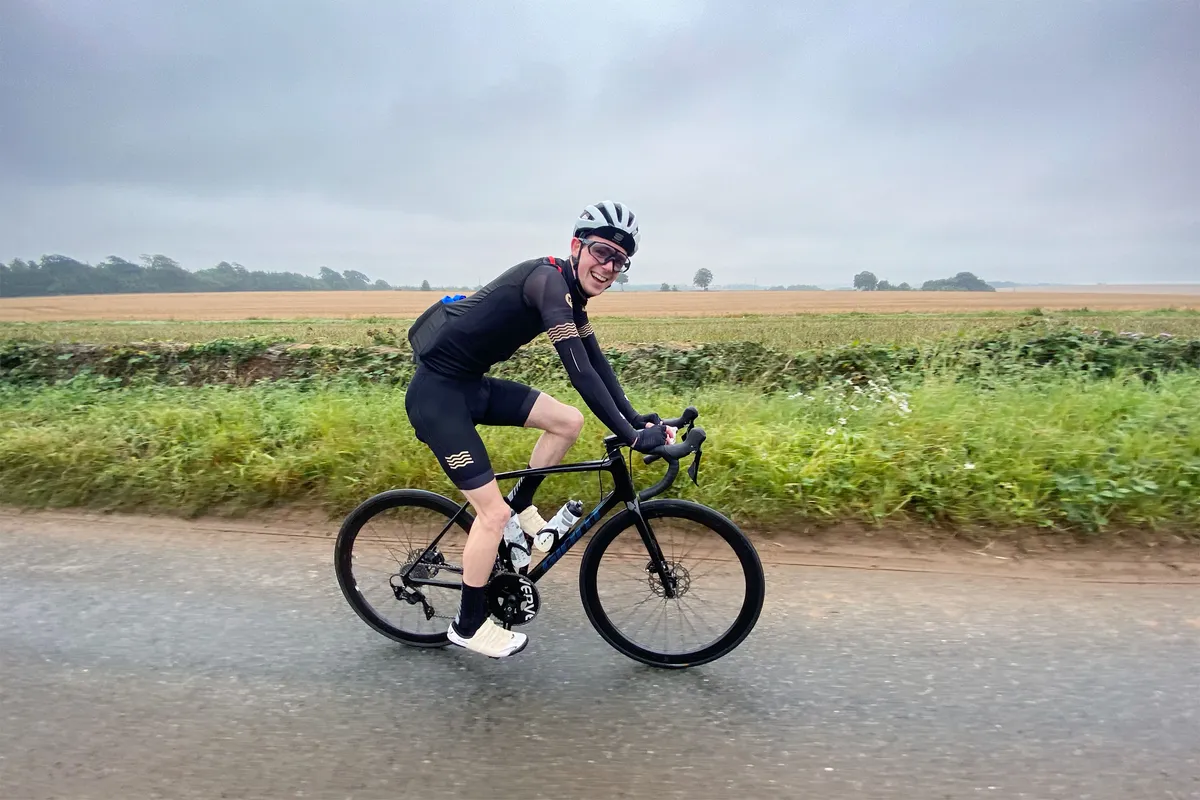
Giant does also have other, more premium, racing tyre options, that can be used on these wheels if you’re looking for those marginal gains. Both the Gavia Course 0 and Cadex Race tyres, for example, have higher TPI counts, thinner casings and lower claimed weights, which should make them faster than the stock tyres.
As mentioned, though, there isn’t any publicly available rolling resistance data for any of Giant’s tyres. Consequently I can’t shake the feeling that, even with the more premium options, I could still be missing out on some cheap speed.
Verdict so far
As you can probably tell, I’m quite torn with this bike at this point. The frameset is excellent and it features a number of great components, but there’s simply no denying that the tyre compatibility issue just hasn’t improved to the degree I’d hoped.
Swapping to a set of Parcours Strade wheels (which I had been testing – look out for a review coming soon), firstly with Vittoria Corsa G+ tyres and latex inner tubes and then with Continental GP5000 TL tubeless tyres, gave me a pretty clear indication of the extra speed and comfort you might be missing out on.
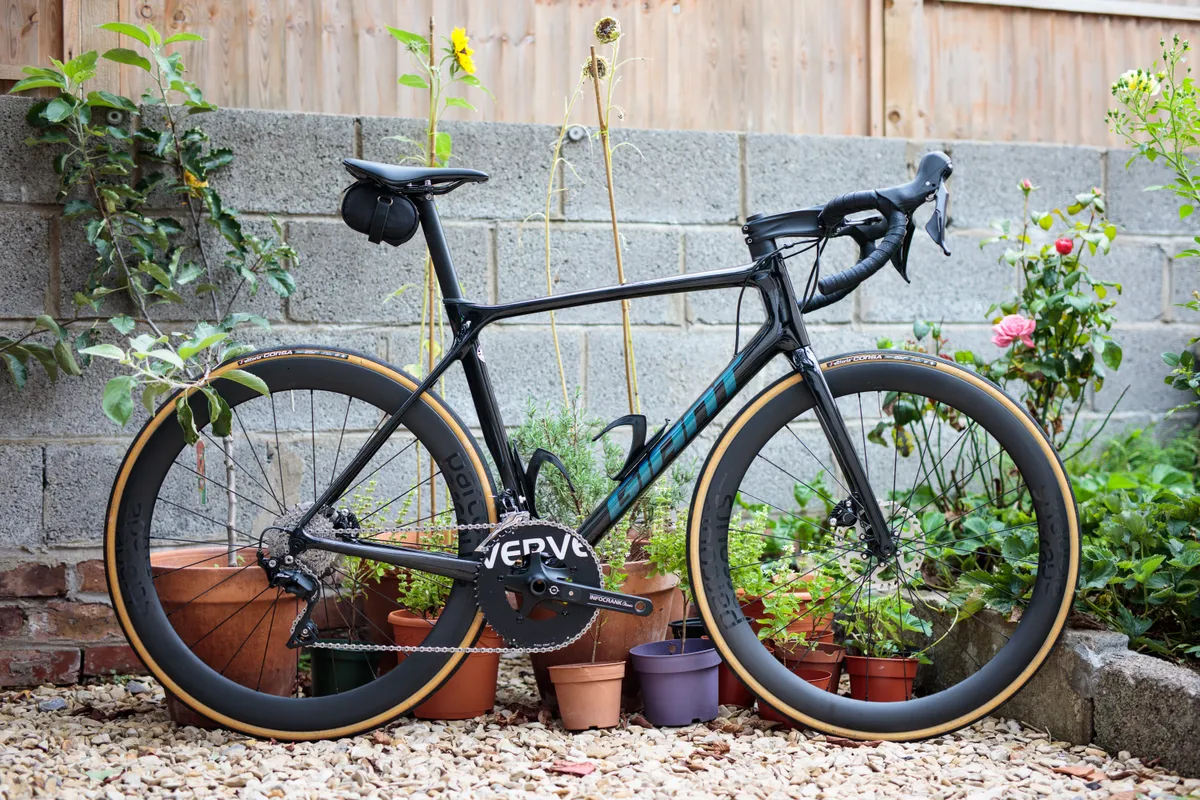
For many, especially those who aren’t as obsessed with rolling resistance charts and tan-wall aesthetics as I am, the selection of compatible tyres Giant offers will be more than enough choice.
But that doesn’t solve the issue of whether you’ll always be able to get your hands on those tyres at short notice if you need them urgently, or whether your bike shop of choice – whether online or in the real world – will be sufficiently informed enough to ensure they don’t inadvertently sell you a set of unapproved (and therefore unsafe) tyres.
In Giant’s defence, it’s obviously a good thing if its safety testing is of a higher standard than other brands. It’s also possible that this situation will lead to a net benefit to consumers in the long term, if tyre manufacturers adapt their products to meet Giant’s improved standards.
However, as things stand, it’s a significant limitation that makes me seriously question whether, were I looking to purchase a new bike right now, I would actually want to buy this bike instead of a competitor option with different wheels.
Hopefully by the time of my next update to this review, there will be more progress on this issue to report on. If that’s the case, it’s likely the review score will change again to reflect this.
Giant TCR Advanced Pro 2 Disc specification and details
The TCR Advanced Pro Disc is the second-tier frameset in the TCR range.
This means the frame is built with Giant’s ‘Advanced’ level carbon fibre, rather than the ‘Advanced SL’ carbon found on the more expensive SL models. Nevertheless, Giant still produces the Advanced level carbon fibre in its own composite factory (rather than purchasing pre-made sheets), so it can better control the quality.
It also receives a standard telescoping seatpost, rather than the integrated seatpost Advanced SL models have.

There are a number of different specs to choose from in the Advanced Pro Disc range, with the main variation being the level of groupset.
The Advanced Pro 2 model comes with a complete Shimano 105 R7020 groupset (with the exception of the chain, which is upgraded to a KMC X11 SL-1) and a full suite of Giant components and finishing kit.
The frame has a press-fit BB86 bottom bracket, and Giant has specced 52/36-tooth chainrings and an 11-30-tooth cassette out back, paired with a short-cage rear derailleur.
The Giant SLR-1 42mm tubeless carbon wheels are 24mm wide externally, 19mm internally and have hookless rims. The hubs take centerlock disc brake rotors and have 12mm thru-axles front and rear.
The tyres are also by Giant, and are its 700×25c Gavia Course 1 tubeless model. These come set up tubeless and measure 27.6mm at 60psi.

The Advanced Pro 2 is the only model in the Advanced Pro range that doesn’t come with a Giant PowerPro power meter specced though, because it’s only available on Ultegra level cranksets.
The paint job is a clear gloss coat over the carbon frame with painted logos in ‘chrysocolla’ (which is a green-blue sparkly mineral). Giant only offers one paint job per spec, so if you want something different you’ll have to choose a differently specced model to get it.
My size medium/large (ML) weighs 7.87kg with the included composite out-front computer mount, but without pedals or bottle cages.
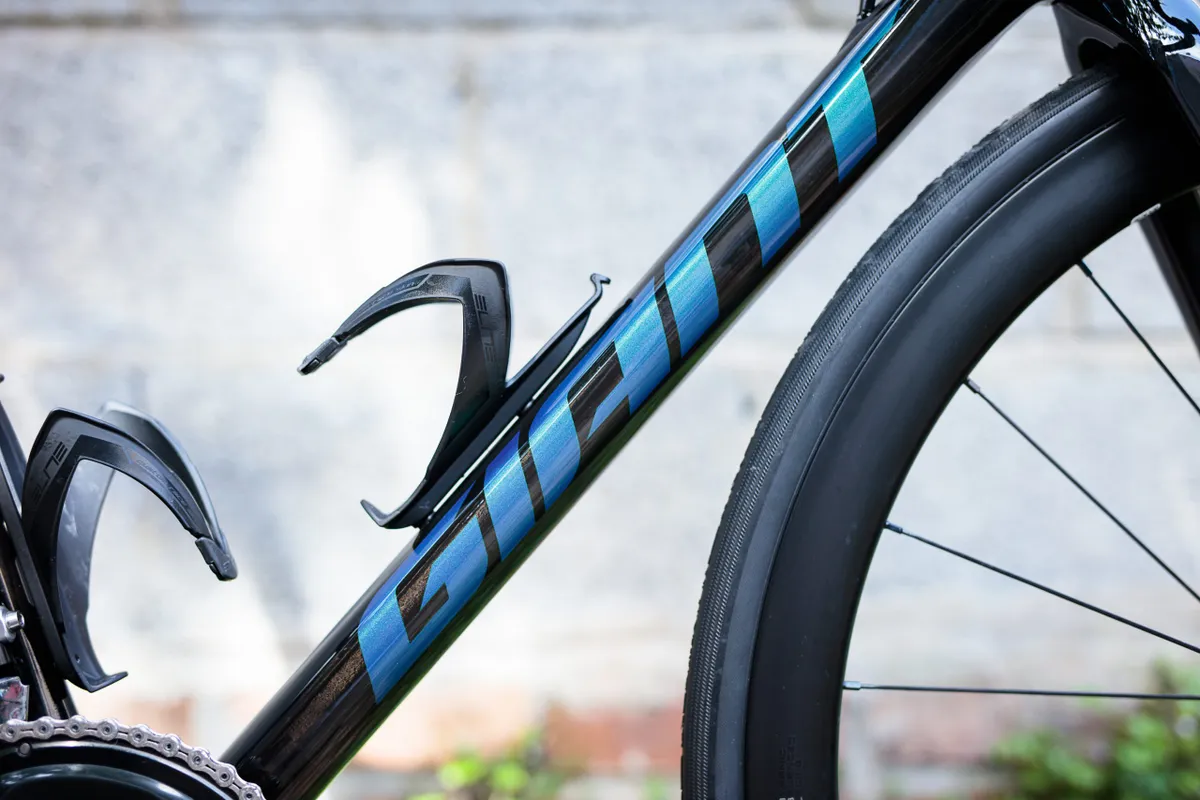
Giant TCR Advanced Pro 2 Disc full specification
- Sizes (*tested): XS, S, M, ML*, L, XL
- Weight: 7.87kg
- Frame: Giant TCR Advanced Pro Disc
- Fork: Giant TCR Advanced Pro Disc (full-composite OverDrive 2 steerer)
- Bottom bracket: Shimano BB86 press-fit
- Shifters: Shimano 105 R7020
- Derailleurs: Shimano 105 R7000
- Cranks: Shimano 105 R7000, 172.5mm
- Chainrings: Shimano 105 R7000, 52/36t
- Cassette: Shimano 105 R7000, 11-30t
- Chain: KMC X11SL-1
- Wheelset: Giant SLR-1 42 Carbon Disc WheelSystem (42mm front and rear)
- Tyres: Giant Gavia Course 1 700×25c
- Brakes: Shimano 105 R7020 hydraulic disc brakes (160mm rotor front, 140mm rotor rear)
- Handlebar: Giant Contact SL, 42cm (centre to centre)
- Stem: Giant Contact SL, 110mm
- Seatpost: Giant Variant, composite
- Saddle: Giant Fleet SL
Giant TCR Advanced Pro 2 Disc geometry (size ML)
Giant’s TCR is a long standing design, so the geometry has been pretty settled for a while, but there are a few tweaks for the 2021 version.
With parallel 73-degree seat tube and head tube angles, it’s slightly slacker than some competitors, such as the Specialized Tarmac Disc or Trek Emonda Disc, but it’s still in classic road race bike territory.
Stack is unchanged versus the 2020 model, but reach decreases 5mm. Reach hasn’t gone down on all sizes though, instead Giant has tweaked both stack and reach figures across the range to make the jumps between sizes a little more consistent.
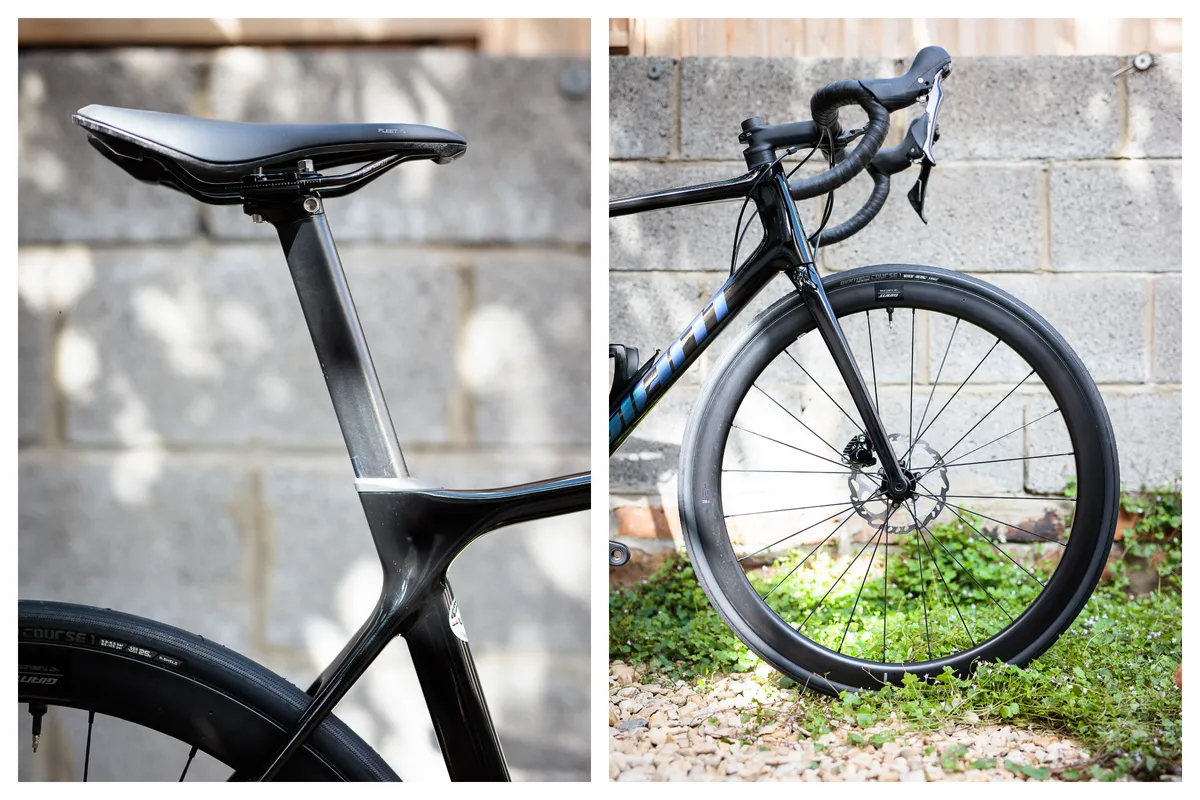
The chainstays remain short at 405mm, and the wheelbase has increased 6mm to 991mm.
Bottom bracket drop has also increased 2mm to 67mm, to maintain a similar bottom bracket height to the previous model while using larger tyres (tyre clearance is officially rated as 32mm on the new model). Trail, the horizontal difference between the tyre contact patch and the steering axis, has also increased by 2mm to 59.2mm.
These changes all point towards a bike that’s slightly less aggressive and a little more stable and slower handling than the previous model.
This makes sense given the increased tyre clearance and general industry trend towards making road bikes more capable on mixed surfaces.
If you’re looking for a bike to race criteriums though, this year’s TCR perhaps edges away from that a little bit.
- Head tube angle: 73 degrees
- Seat tube angle: 73 degrees
- Chainstay length: 405mm
- Seat tube length: 500mm
- Top tube length: 565mm
- Head tube length: 165mm
- Bottom bracket drop: 67mm
- Wheelbase: 991mm
- Stack: 562mm
- Reach: 393mm
Why did I choose this bike?
Having ridden a 2009 Giant TCR Advanced SL for around six years, I thought it would be interesting to see how much 11 years of industry progress has changed things.
Despite the explosion of interest in gravel and adventure cycling, I’m a roadie at heart. I would have chosen a full-on aero road bike such as the Propel if I still raced, but an all-round bike such as the TCR is a little more versatile and easier to live with.
While my old TCR is a size M, I went for a ML this time because the M was always a little too small for me (I bought it second-hand). The difference in size isn’t enormous, but it makes the saddle to bar drop a little less aggressive, which should make for a more sustainable crouch position on the bike.
It’s also my first foray into using hydraulic disc brakes on a long-term basis, and I’m looking forward to trying out some chunkier race tyres now that the clearances have been increased to 32mm.
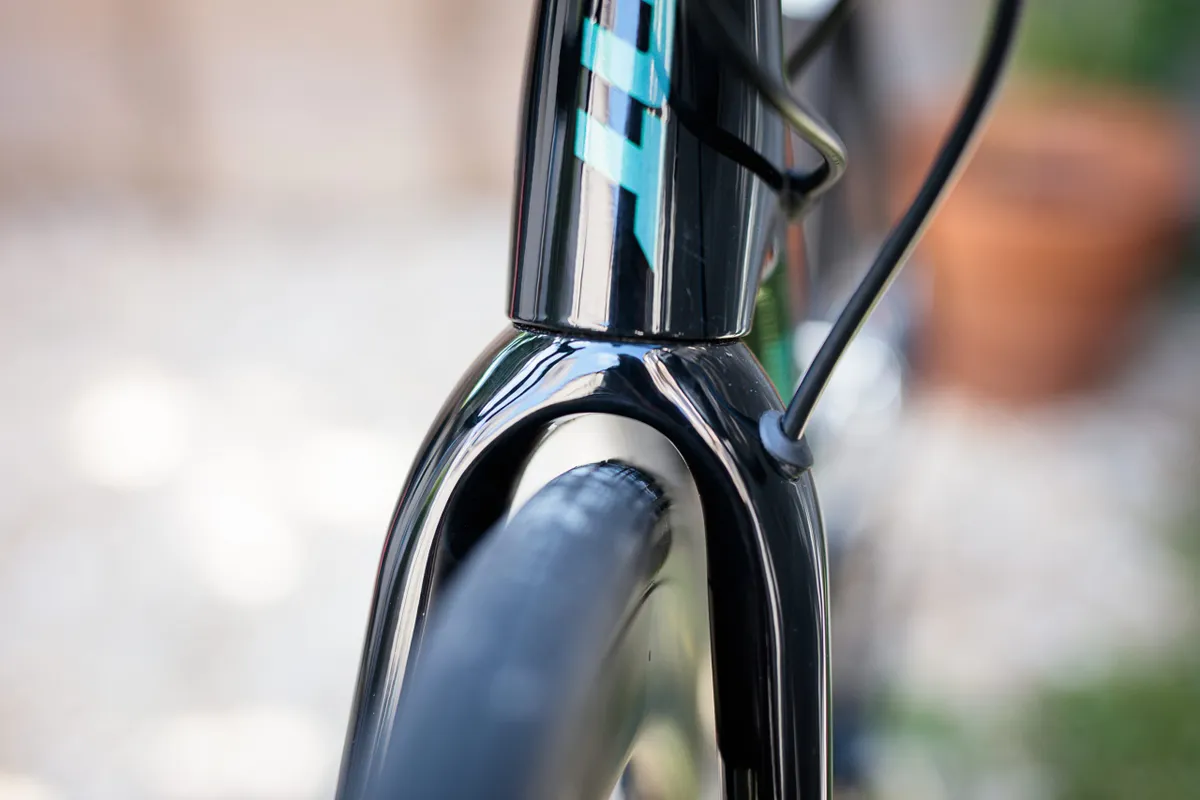
It’s also an interesting build at a key price point. £3,000 is a lot of money to spend on a bike, but you could easily spend a lot more.
Given the 2021 TCR Advanced SL Disc frameset has an RRP of £2,399, getting a full bike with an outwardly very similar frame and carbon wheels for only £600 more looks like great value on paper.
Giant TCR Advanced Pro 2 Disc initial set-up
Set-up was easy. All I needed to do was rotate the handlebars, set the saddle height and add some pedals and bottle cages.
I did adjust the handlebar height (taking a couple of centimetres of spacers out), but as it has a non-integrated front-end set up this didn’t present any issues.
One great bonus was that the wheels came set up tubeless, with sealant added. Well done Giant. I initially pumped the tyres up to around 60/62psi (front/rear), but I’ll have to experiment with this to find the sweet spot for my local roads.
The only thing I changed before riding was to remove the chain and strip the factory grease from it, so I could throw it in the slow cooker with some wax and get it properly lubricated.
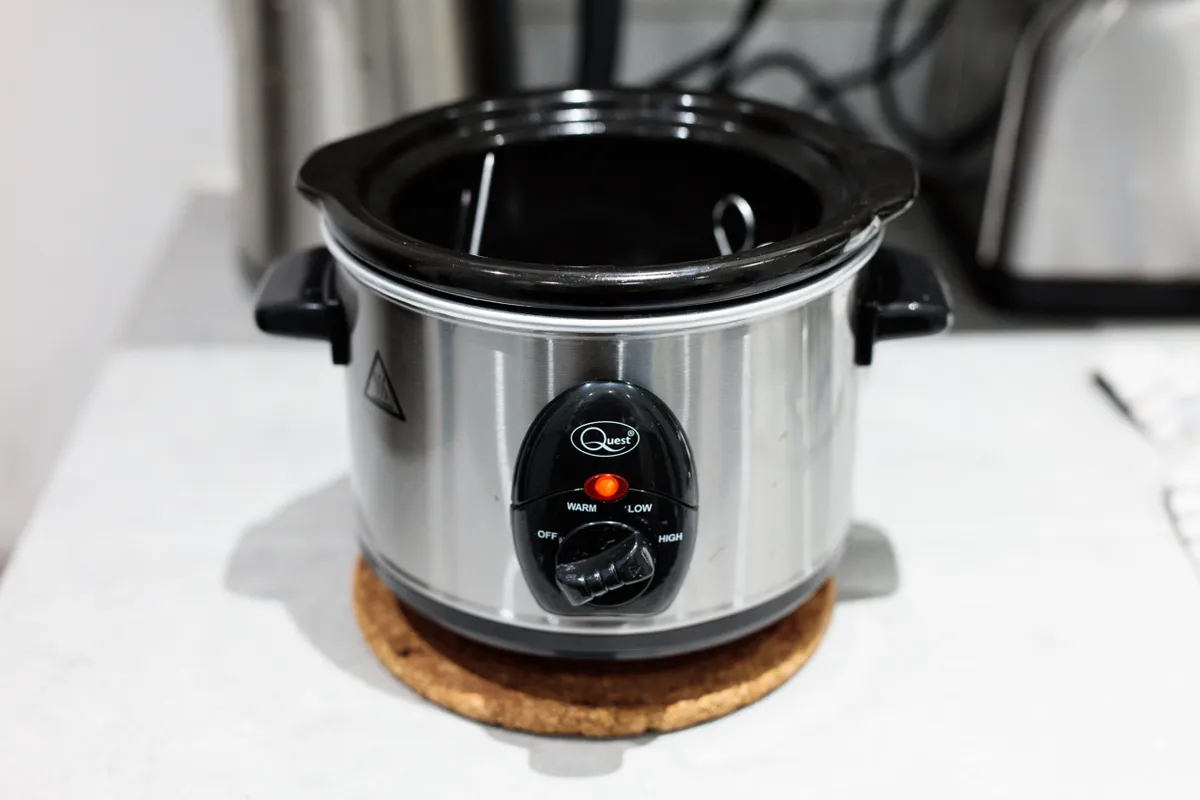
Factory grease is a magnet for dirt and grime (it’s intended to prevent corrosion during storage, not act as a lubricant), and leaving it on the chain would have meant a fair amount of extra drivetrain cleaning to do down the line.
Giant TCR Advanced Pro 2 Disc ride impressions
Standing on the pedals for the first time the most immediately noticeable characteristics of this bike are its smoothness and confident handling, especially at speed. It’s very easy to feel at home on.
The smoothness is likely helped in part by the tubeless wheels and tyres. The ability to run lower pressures than with inner tubes, without any risk of pinch flatting, certainly helps on the South West’s less than pristine roads.
Coming from a bike with a 130mm stem and 36cm traditional bend handlebars, the front end feels comically short and wide with its 110mm stem and 42cm compact handlebars.
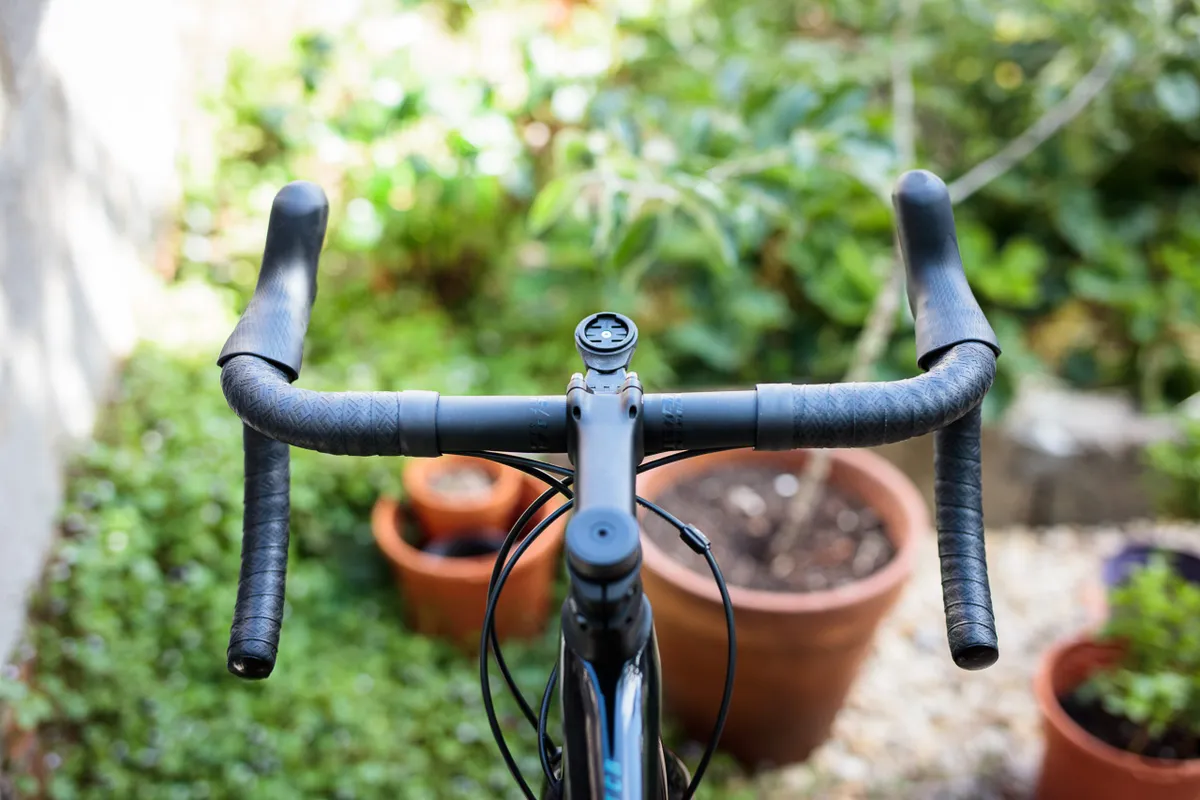
I’m a pretty slim guy (183cm tall, around 65kg), so this won’t be the case for everyone, but I personally found the width of the handlebars quite uncomfortable – my wrists splay out to the brake hoods awkwardly.
42cm bars are undoubtedly the current de facto standard on bikes of this size across the industry, but they’re not for me.
I wish more brands would offer a choice of handlebar widths and stem lengths when purchasing a bike. I suspect many, if not most, dedicated cyclists will change at least one of those components after buying a new bike, and besides it being an added cost, it also feels a little wasteful to be left with unwanted components.
Pedalling stiffness is more than adequate for someone like me. I’m never going to test frame stiffness to its limits with my willowy figure, but climbing out of the saddle or ‘sprinting’ (if you can call it that) felt purposeful and composed.
Trying to detect aero improvements from the wheels or frame is a fool's errand unless you have the right kit (which, for the record, I would like to get my hands on).
It doesn’t feel like a superbike with a radical, wind cheating cockpit and 60mm aero wheels, but I believe in physics and I’ve little doubt the redesigned ‘truncated ellipse’ tube shapes are likely more aerodynamically efficient than they were previously, as Giant claims.
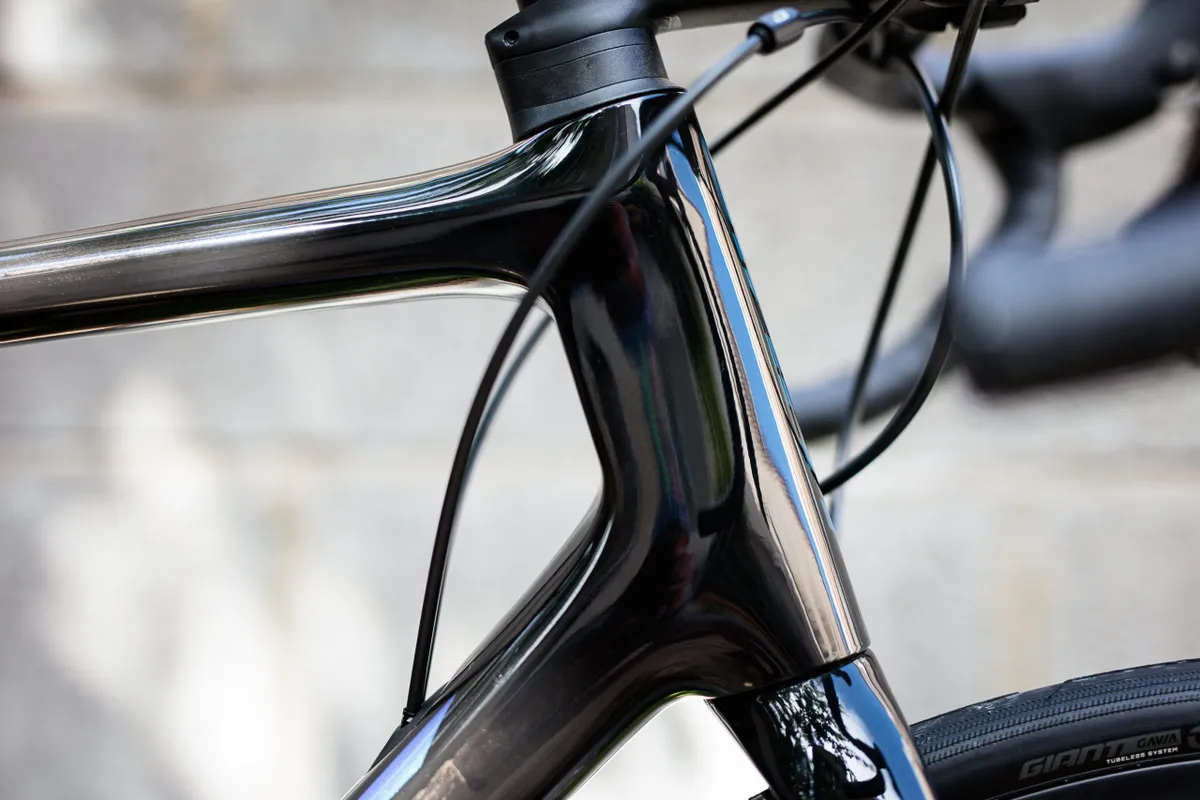
It’s also reassuring to know that Giant designed and tested the aerodynamics of the new TCR with two bottles in place, which is often overlooked.
The wheels seem great on first impressions and there's no denying they look the part.
The move to a slightly wider internal width rim (up to 19mm from 17mm) is welcome because this improves tyre profile, but I think they could be wider externally. At 24.5mm externally, they're not narrow by any means, but they aren't as progressive as they could be.
It's a minor point, but testing by aero wheel pioneers such as HED and Zipp has shown that rims need to be around 105 per cent of the width of the tyre to maintain optimum aero performance. Ideally, I'd have preferred to see the external rim width up around 28mm or wider, in order to match the tyres this bike is specced with.
I wasn’t so immediately enamoured with the saddle. The short length felt great when riding in aggressive positions, but the flat side to side profile is quite different to what I’m used to when sitting more upright.
I completed the 80km or so ride without any particular discomfort, but I felt like I was perched on top of it rather than sat in it.
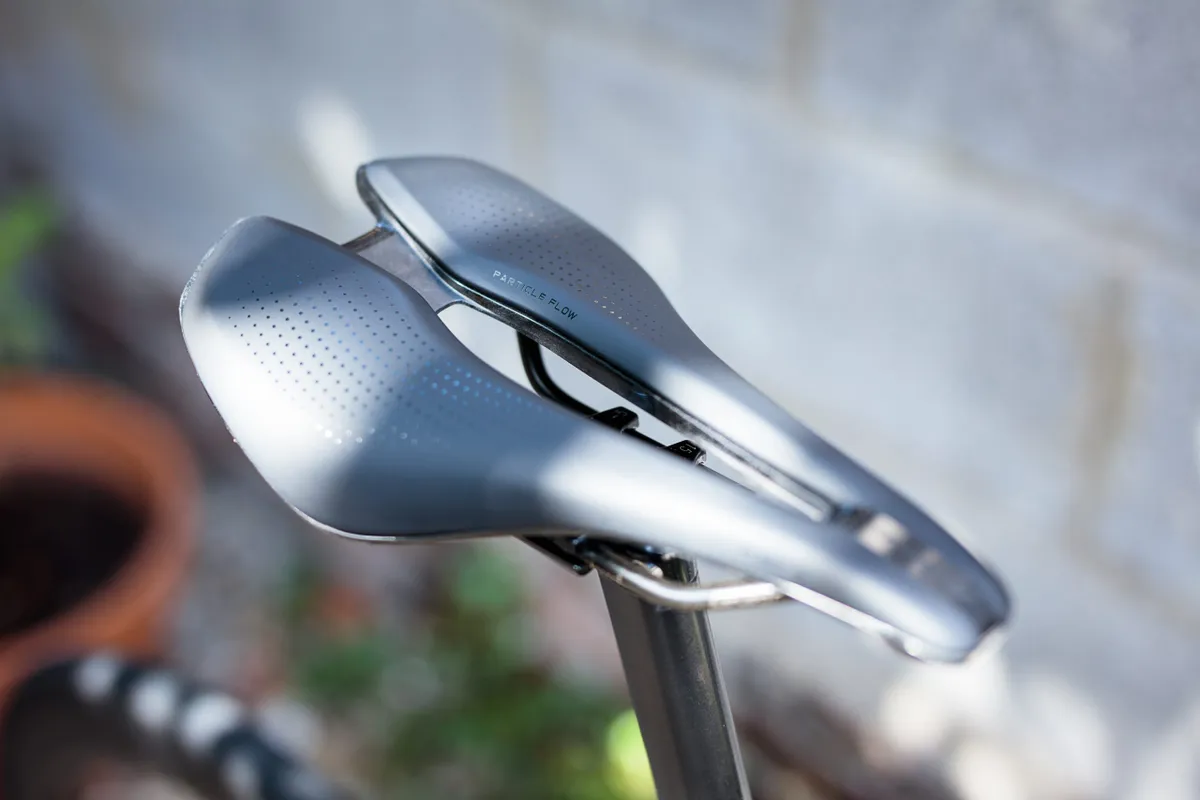
Saddle choice can be highly personal, though, so it’s not necessarily a bad one. Other people may get on with it straight away, but I’ll need a few more rides to decide whether we’re going to be long-term friends or not.
The Shimano 105 R7000 groupset works as flawlessly as you’d expect. It's a little heavier, and it doesn’t have the bling factor of Ultegra or Dura-Ace, but it works brilliantly and I think the black finish looks very smart, at least when it’s brand new.
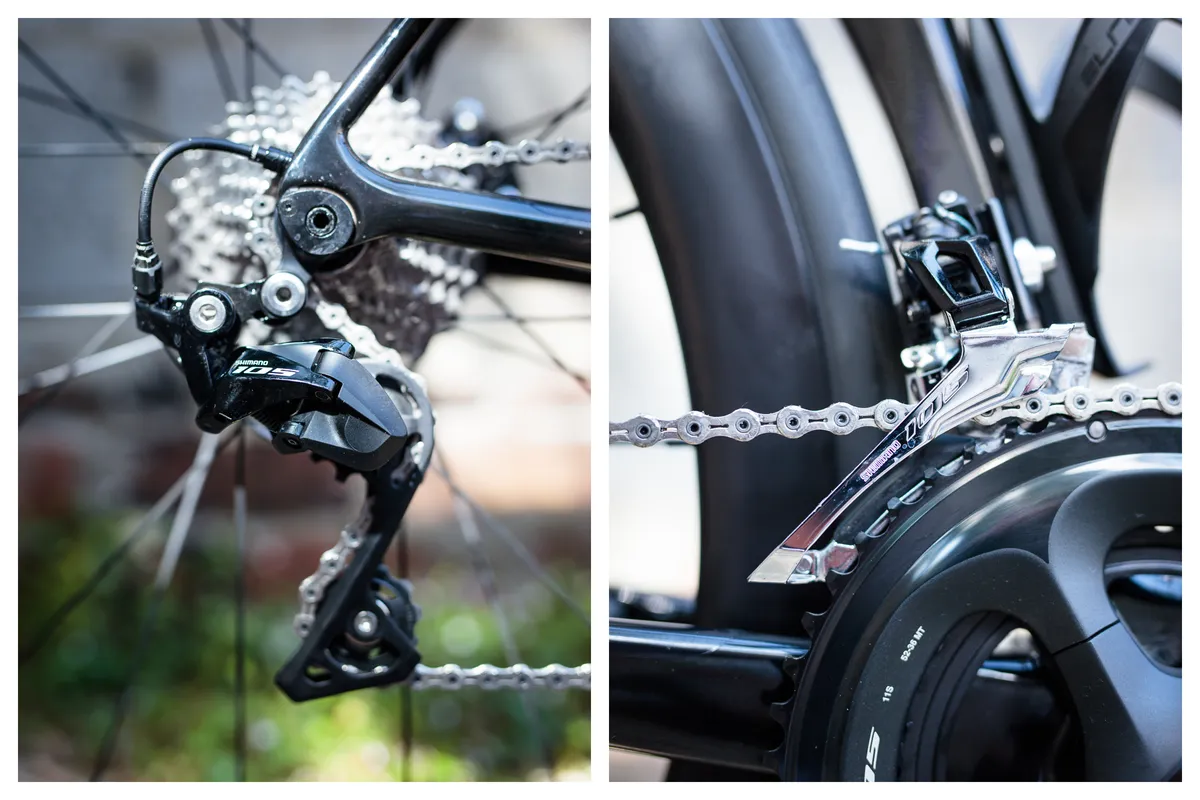
It’s worth noting you can easily find Shimano Ultegra R8000, or occasionally even Ultegra Di2, on bikes at a similar price point. However, in my experience, this usually means compromises elsewhere in the spec, most often at the wheels.
Considering the performance of the current generation of 105 is so close to that of mechanical Ultegra, I think it’s a smart compromise to keep the price down and still spec the high-end wheels because they make a much larger difference to performance.
The only real negative I discovered on my first ride was that my knees occasionally hit the gear cables when climbing out of the saddle.
On the 2020 frame, the gear cables were routed through the front of the head tube, but on the 2021 frame they enter the frame via the down tube.
It’s a curious change because as well as interfering with my knees, it also leaves a greater amount of exposed cable compared to the 2020 frame, which isn’t good from an aero perspective.
It’s possible this issue could be solved simply by shortening the cables a few centimetres though, so they hug the head tube more closely.
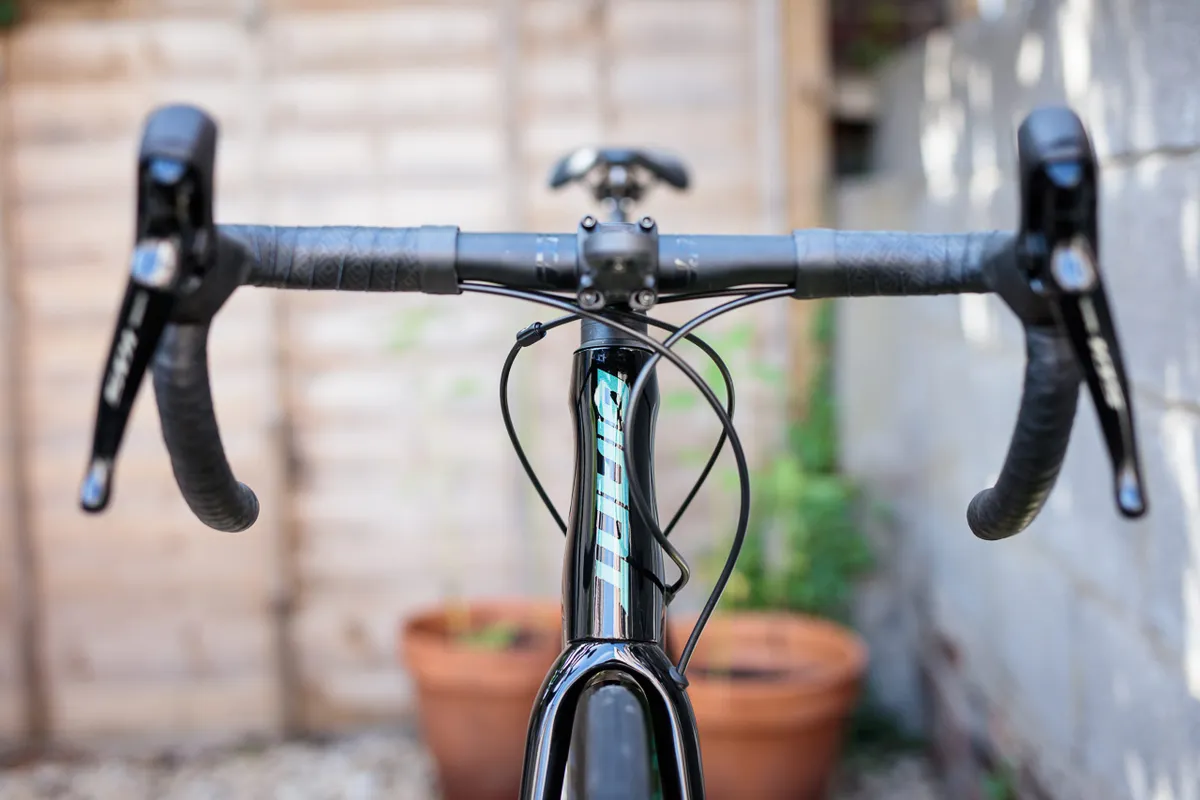
Giant TCR Advanced Pro 2 Disc upgrades
One of the first things I’ll always look to add to any bike is a power meter, and since this model doesn’t come with Giant’s own Power Pro power meter pre-installed, I'll be doing the same here.
As the TCR Advanced Pro 2 Disc has a Shimano BB86 press-fit bottom bracket, I can use the SRM from my 2009 TCR Advanced SL, but I could also use a recently acquired Verve Infocrank Classic 24mm because it fits a Shimano bottom bracket too.
These cranks both have larger 130BCD chainrings though, meaning they would increase the gear ratios slightly.
A more elegant solution could be a set of power meter pedals. I’m currently testing Favero's Assioma Duo pedals, and these would fit seamlessly onto the original 105 R7000 cranks.
Front end
The next thing I want to change is the stem and handlebar set up. It’s a little too short and far too wide for my tastes right now.
I’ll look at swapping the stem for a 120mm or 130mm option and the handlebars for something around 36 to 38cm with a deeper drop, perhaps with an aero top-section too.

Because of the 1¼ inch oversized steerer tube, aftermarket stem options are very limited, meaning I’ll most likely have to get a direct replacement for the stem from Giant.
I would probably want to do this anyway because it maintains the aesthetic integration with the new aero-profiled headset spacers, but it’s something to be aware of.
Tyres
There’s nothing wrong with the stock tyres, but these are always going to be an easy upgrade target for someone looking for cheap performance gains. I think a tan wall option would provide a great visual contrast to the gloss black frame too.
There may be an issue with the hookless rims though. As things stand, Giant has only a short list of approved tyres and it only has Giant and Cadex (Giant's in-house brand) tyres on it. It also states that using a tyre not on the approved list is done at your own risk.
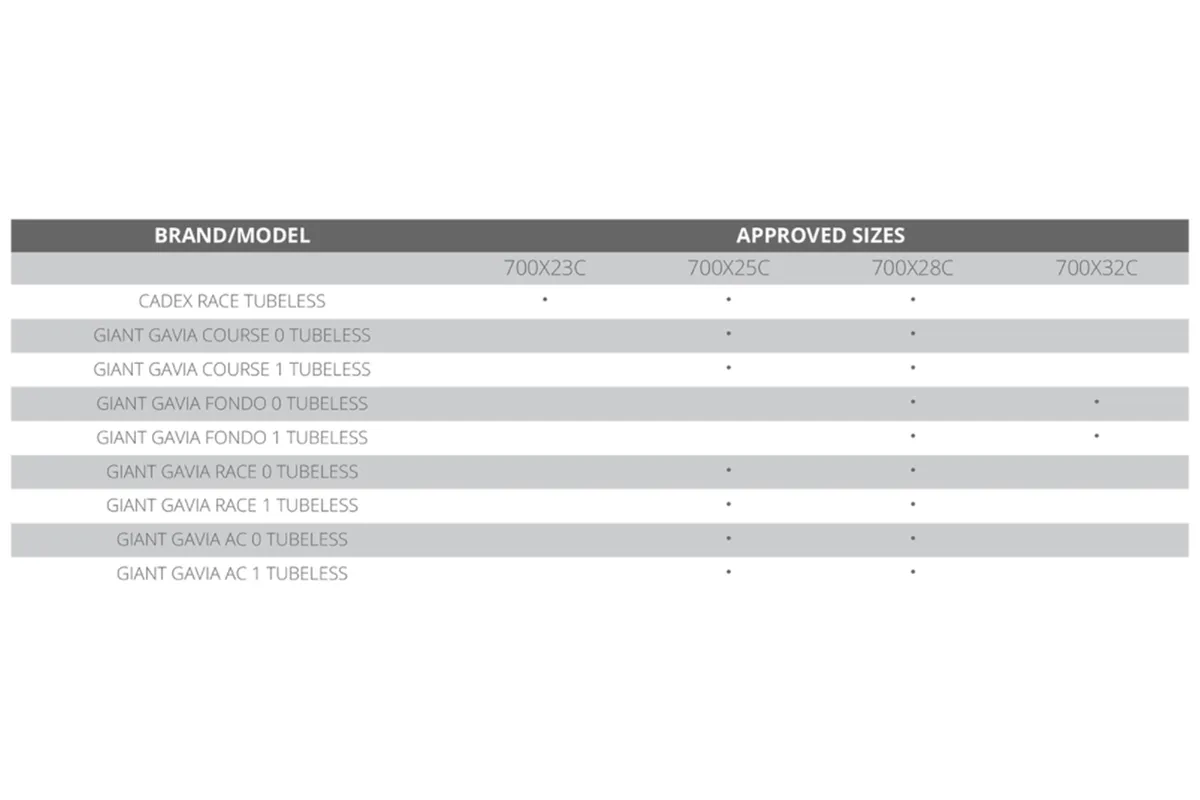
Giant told BikeRadar it's working with other tyre brands to produce a much longer list that all parties can agree on, but it wasn't able to tell us exactly when this information would be made publicly available.
Ideally, I’d like to try something fast such as the Schwalbe Pro One TT or perhaps a tyre from Challenge’s new HTLR range, but I'll have to wait for Giant's updated compatibility list to find out what's approved.
As we've noted elsewhere, it does mean that some popular options such as Continental's GP5000 TL are not useable, with Continental previously stating its road tyres can only be used on hooked rims.
Tyres are so integral to a bike's performance and it would be disappointing if compatibility with third-party manufacturers is so limited. Fingers crossed the expanded compatibility list is released soon.
Anything else?
I’ll give the saddle a little more time before I decide whether to swap it out or not. It’s not been ‘love at first sit’, but the flat shape is possibly something I could get used to.
I’d be tempted to swap the rear derailleur for a long cage (GS) version at some point, so I can use an 11-32t or 11-34t cassette if I need to tackle any super-steep climbs.
For general riding around Bristol though, the 11-30t cassette should provide sufficient range when paired with the stock 52/36t chainrings up front.
The Shimano SM-RT70 disc brake rotors aren’t the prettiest rotors on the market, even if they function perfectly well. I’ll likely look at replacing them with something better looking when they wear out.

Other than those things though, it’s hard to pinpoint anything else that needs upgrading. Overall, the spec is very solid.
BikeRadar‘s long-term test bikes
At the start of the year, every member of the BikeRadar team selects a long-term test bike to ride over the course of the following 12 months.
Some choose a bike from their favoured discipline and ride it hard for a year, others opt for a bike that takes them outside of their comfort zone.
Our long-term test gives us the opportunity to truly get to grips with these machines, so we can tell you how they perform through different seasons and on ever-changing terrain.
We also use them as test beds for the latest kit, chopping and changing parts to see what really makes the difference – and help you decide which upgrades are worth spending your money on.
To see all of the BikeRadar team’s bikes – and stay up-to-date with the latest developments – visit our long-term reviews hub.
Product
| Brand | Giant |
| Price | A$4999.00, €3350.00, £3499.00 |
| Weight | 7.87kg |
Features
| Fork | Giant TCR Advanced Pro Disc (full-composite OverDrive 2 steerer) |
| Stem | Giant Contact SL, 110mm |
| Chain | KMC X11SL-1 |
| Frame | Giant TCR Advanced Pro Disc |
| Tyres | Giant Gavia Course 1 700x25c |
| Brakes | Shimano 105 R7020 hydraulic disc brakes, 160mm rotor front / 140mm rotor rear |
| Cranks | Shimano 105 R7000, 52/36T, 172.5mm |
| Saddle | Giant Fleet SL |
| Wheels | Giant SLR-1 42 Carbon Disc WheelSystem (F:42mm, R:42mm) |
| Headset | Giant OD2 Road headset |
| Shifter | Shimano 105 R7000 |
| Cassette | Shimano 105 R7000, 11-30T |
| Seatpost | Giant Variant, composite |
| Handlebar | Giant Contact SL, 42cm (centre to centre) |
| Bottom bracket | Shimano BB86 press-fit |
| Available sizes | S, M, ML, L, XL |
| Rear derailleur | Shimano 105 R7000, short cage |
| Front derailleur | Shimano 105 R7000 |

